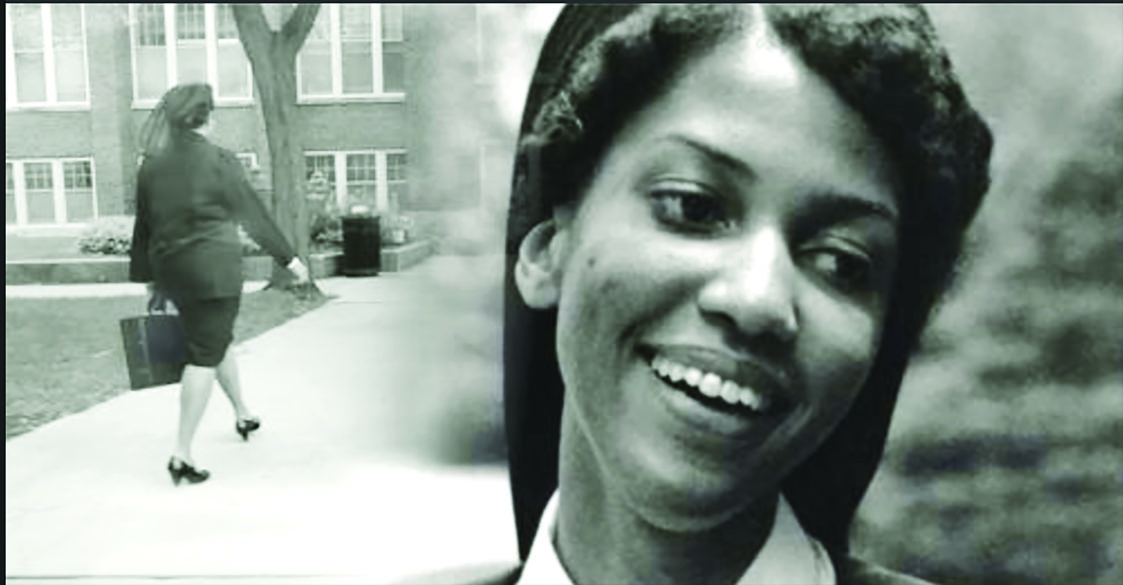Special celebrations
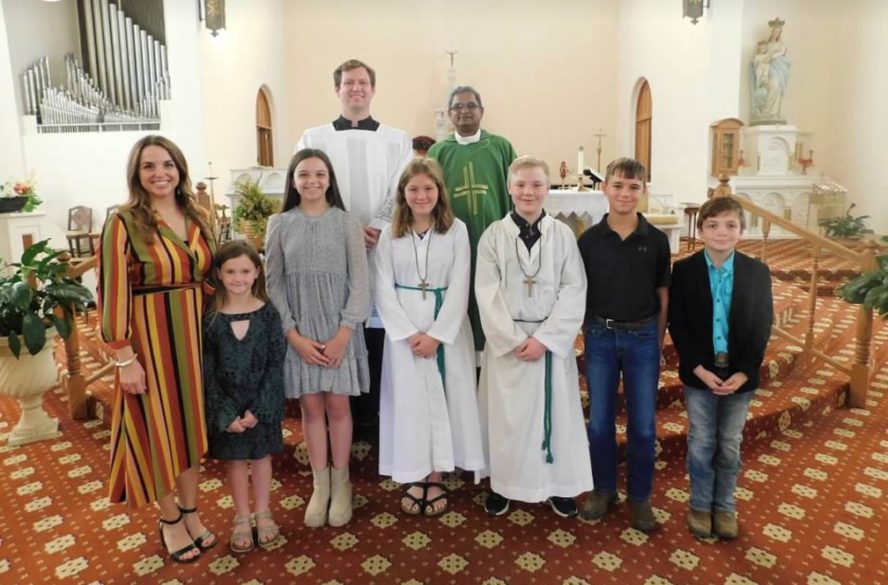
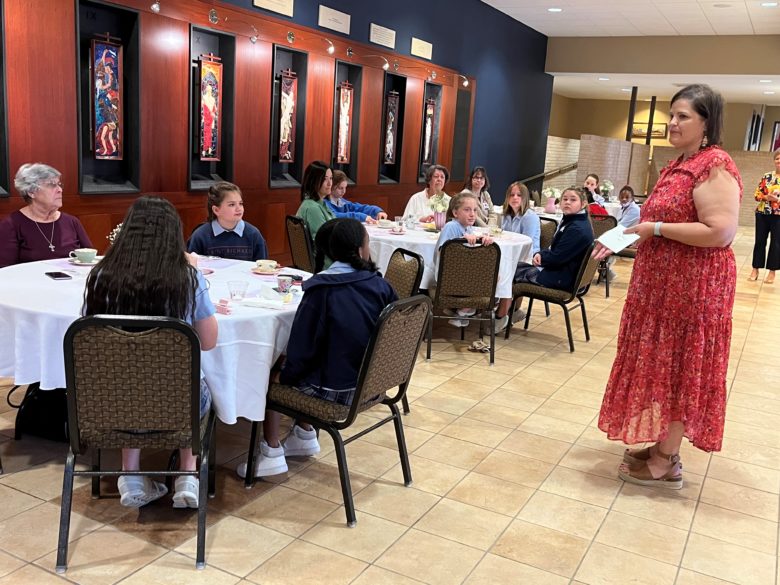
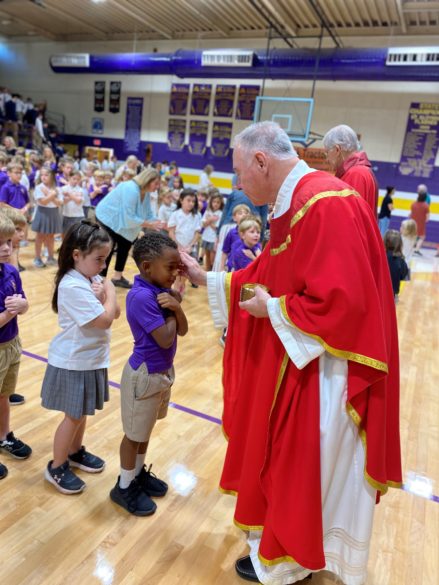
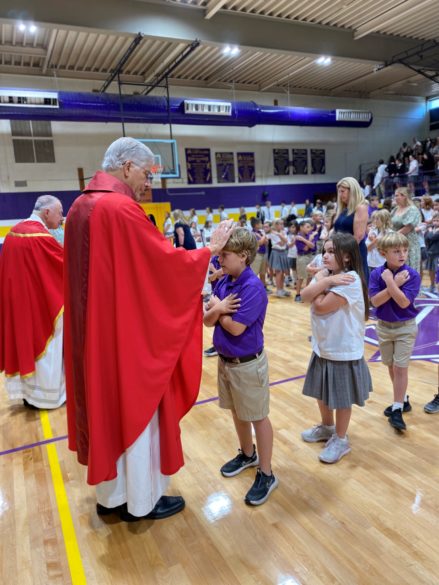
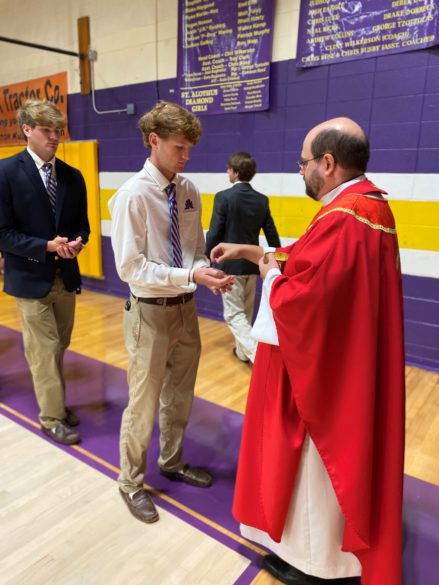
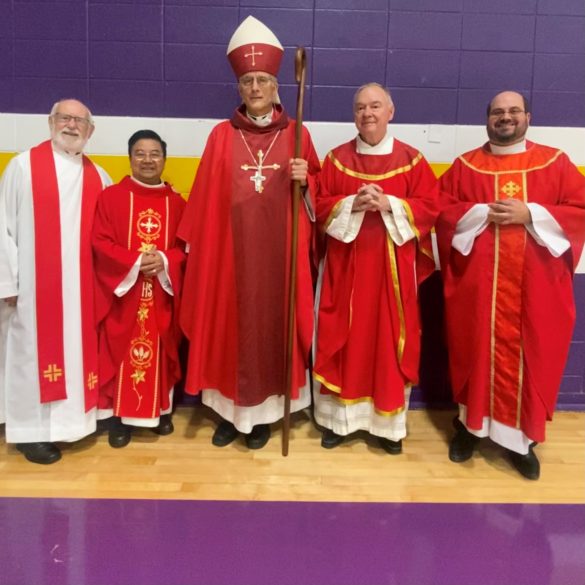
School Masses
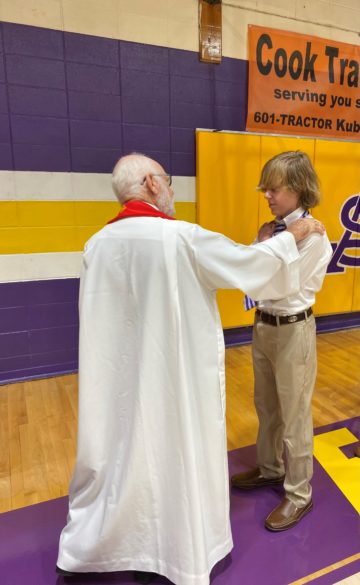
Columbus

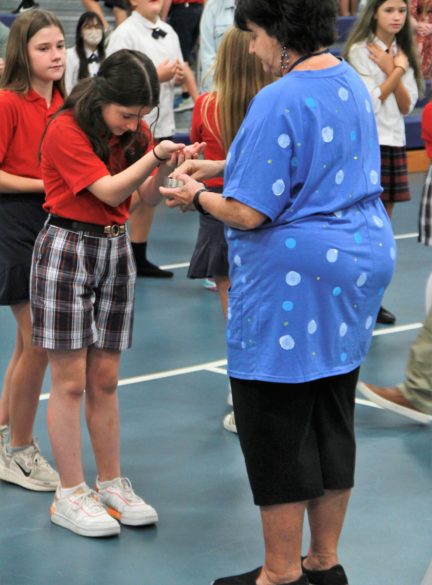
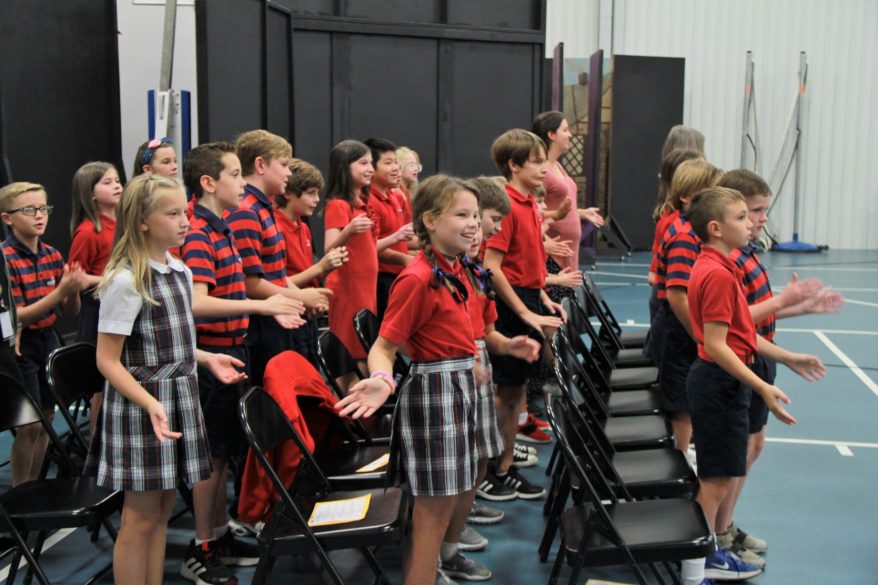

Happy birthday, Mary!
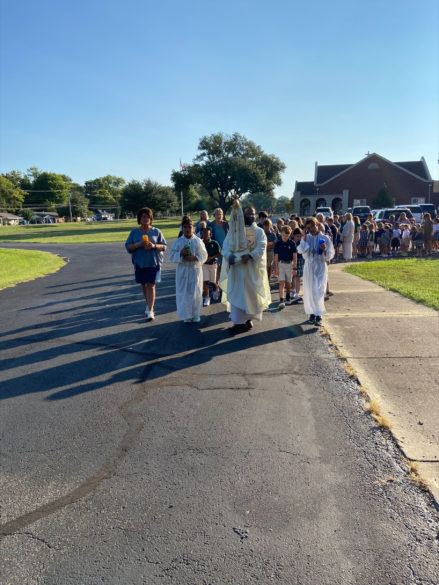
Hands-on learning
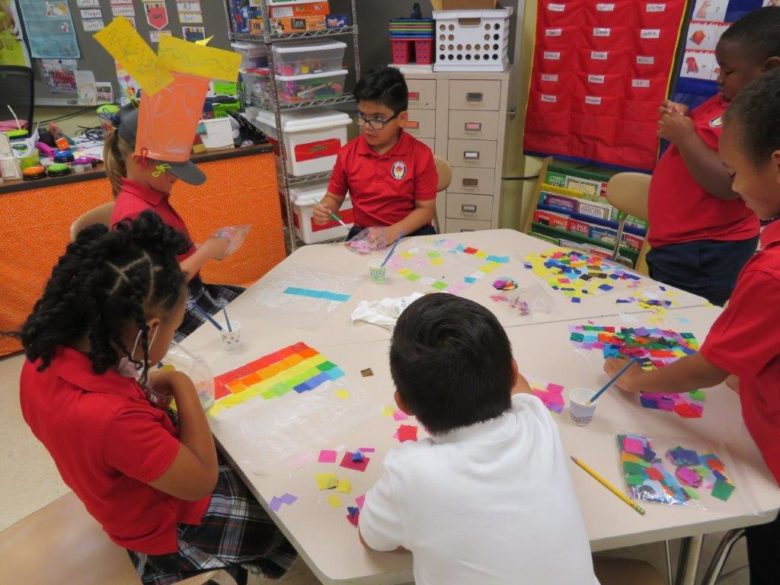
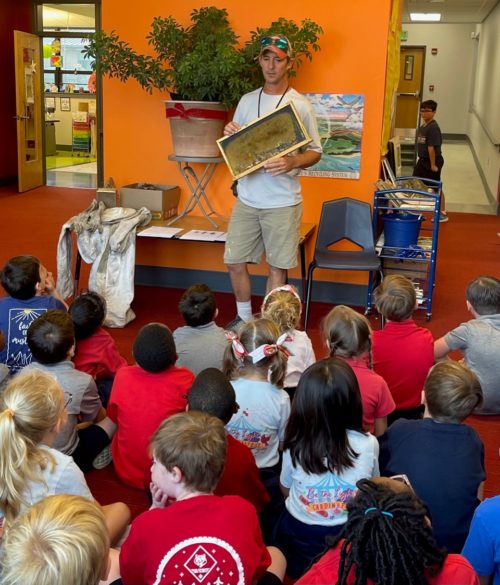

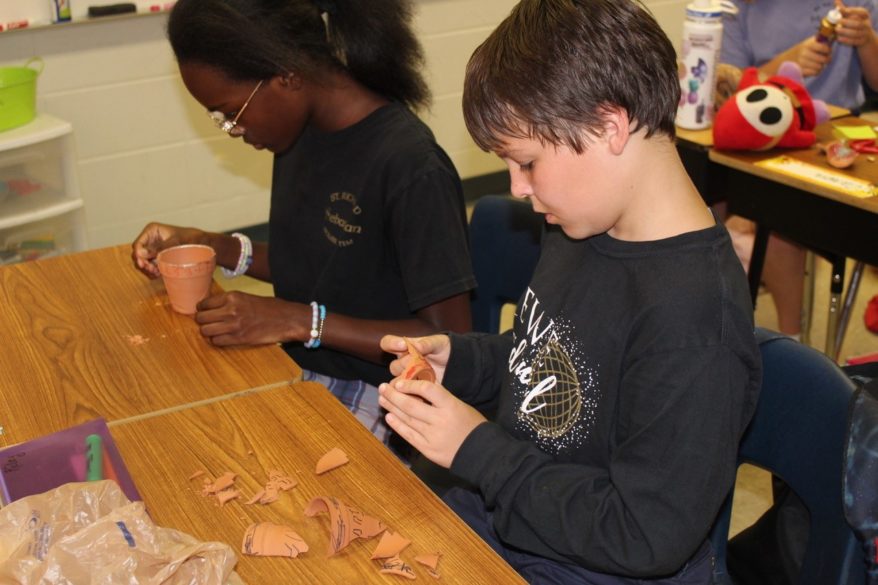







Columbus









By Joanna Puddister King
GLUCKSTADT – St. Joseph parish hosted their annual Germanfest on Sunday, Sept. 25 on the church grounds. The Gluckstadt community was founded in 1905 by German immigrants. Many of the descendants of the original families still attend the parish.
Much prep work goes into planning this fun-filled festival. Families gather weeks in advance to can sauerkraut using a traditional recipe. In the days leading up to the Germanfest you can find parishioners preparing sausages, bratwurst, desserts and other German delicacies to share with the community.
This year, Germanfest was a hot one with temps in the low-to-mid 90s, but festival goers had lots of fun, good food and a variety of beer to sample.
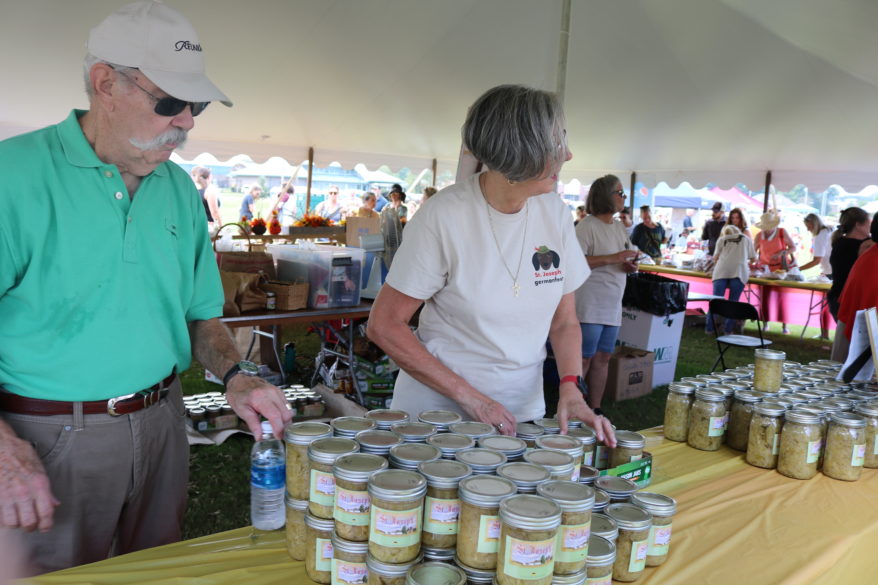
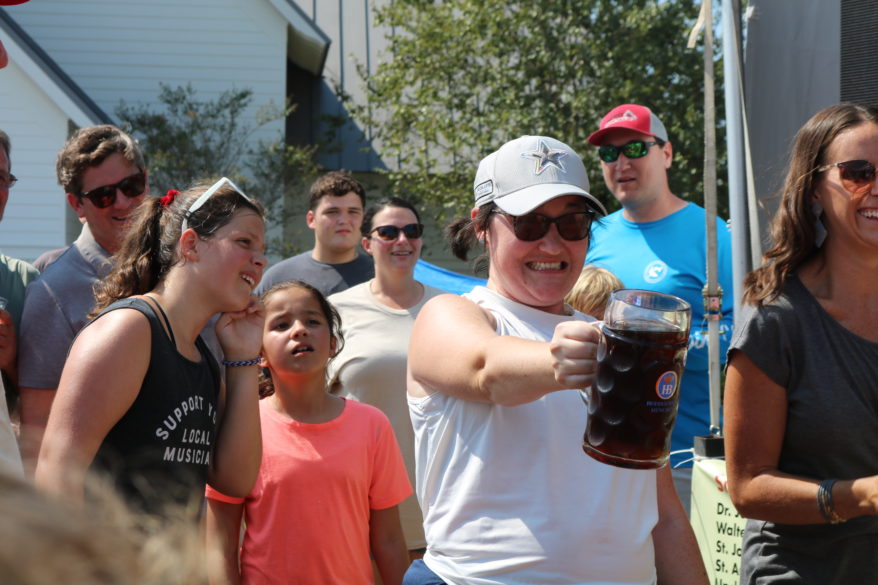
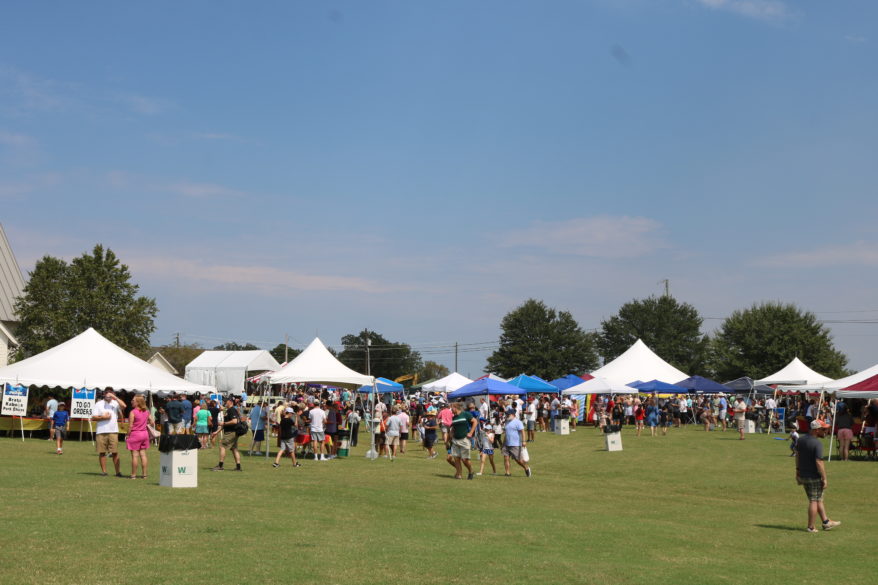
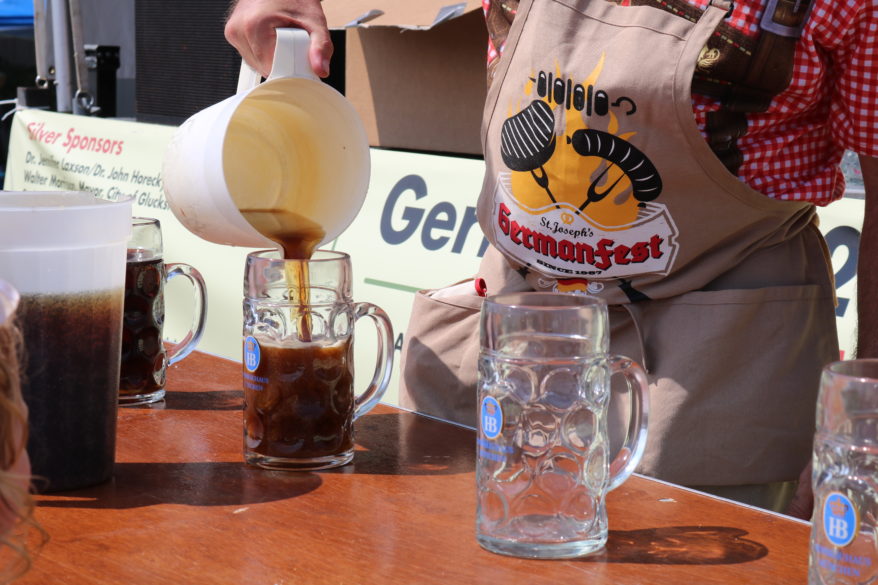

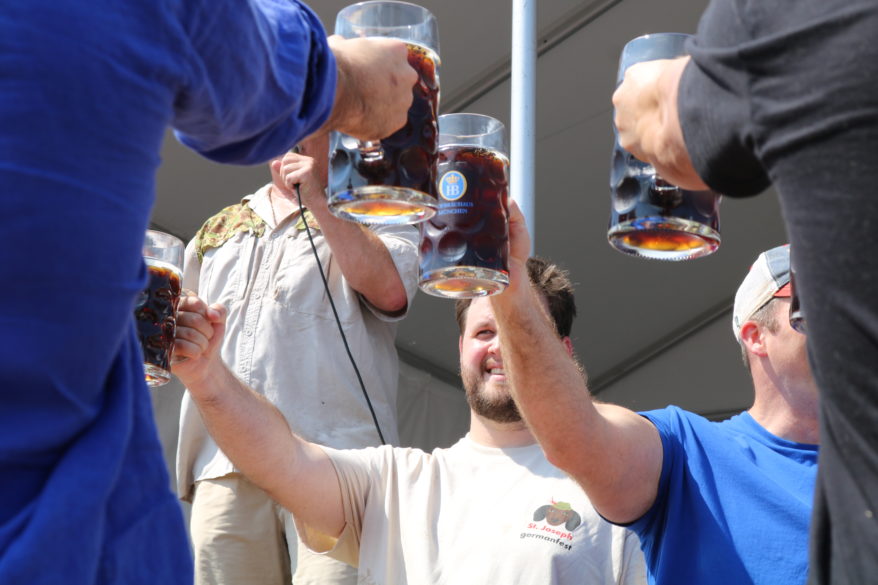
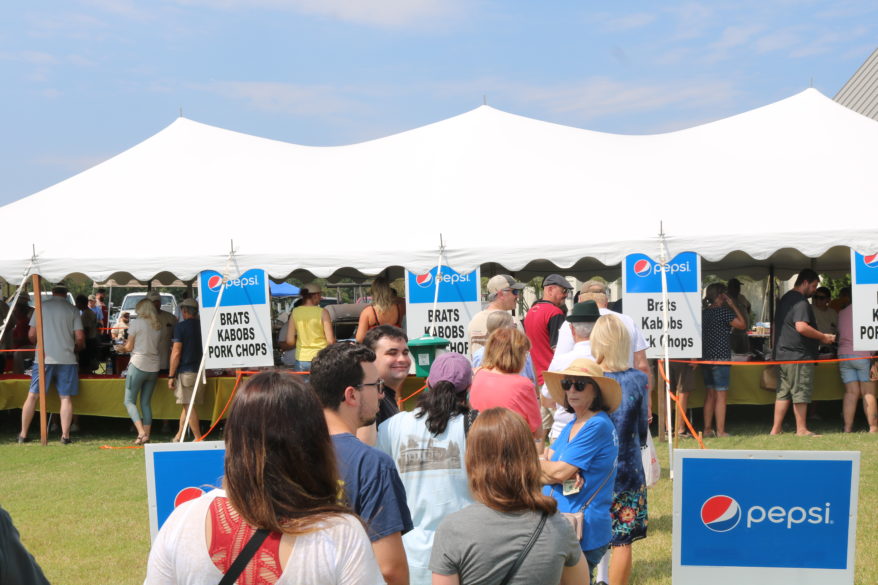
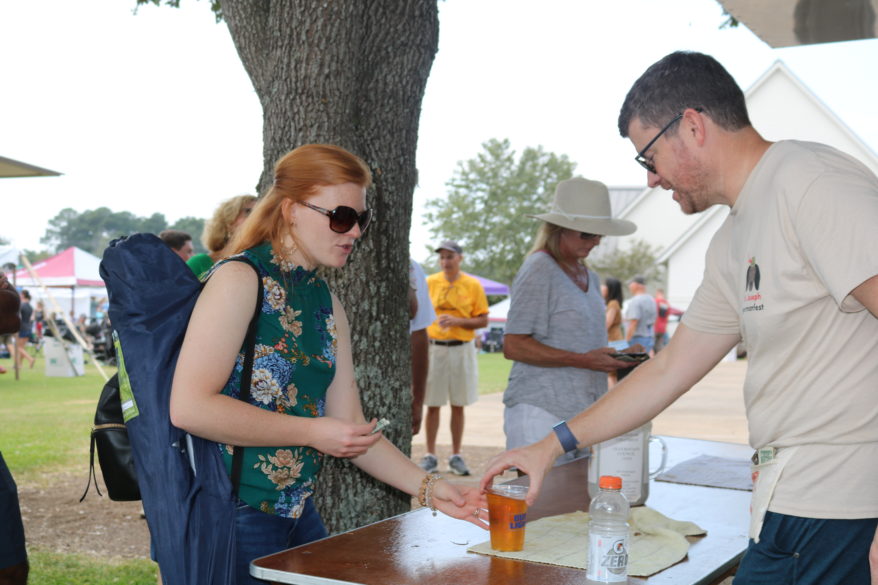
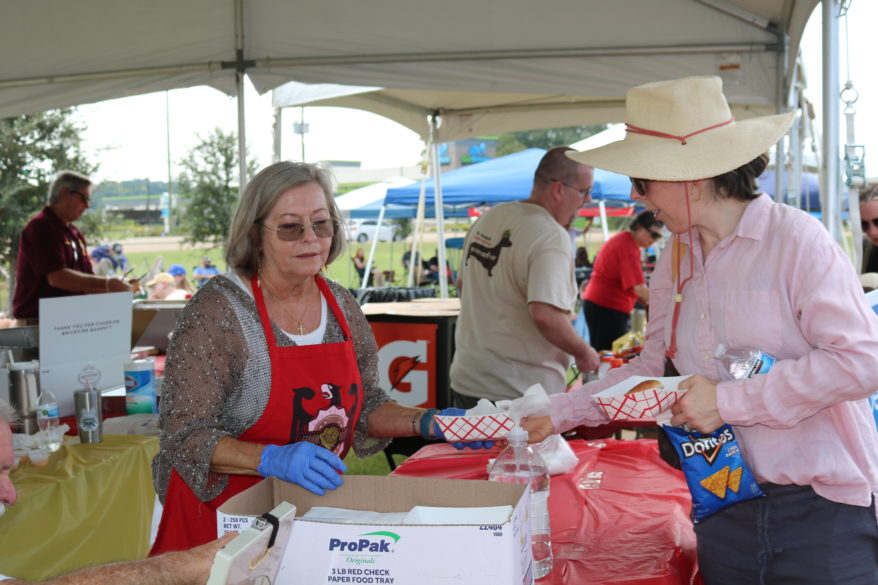
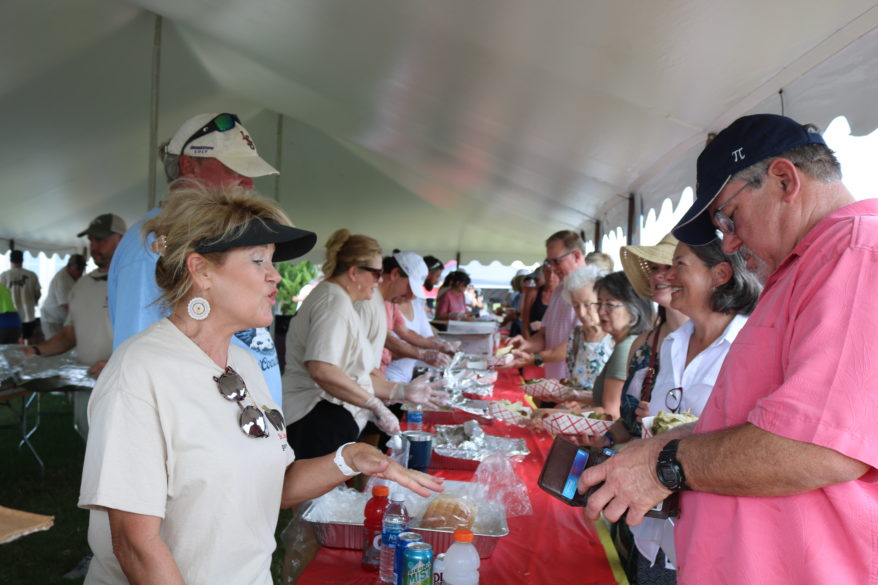

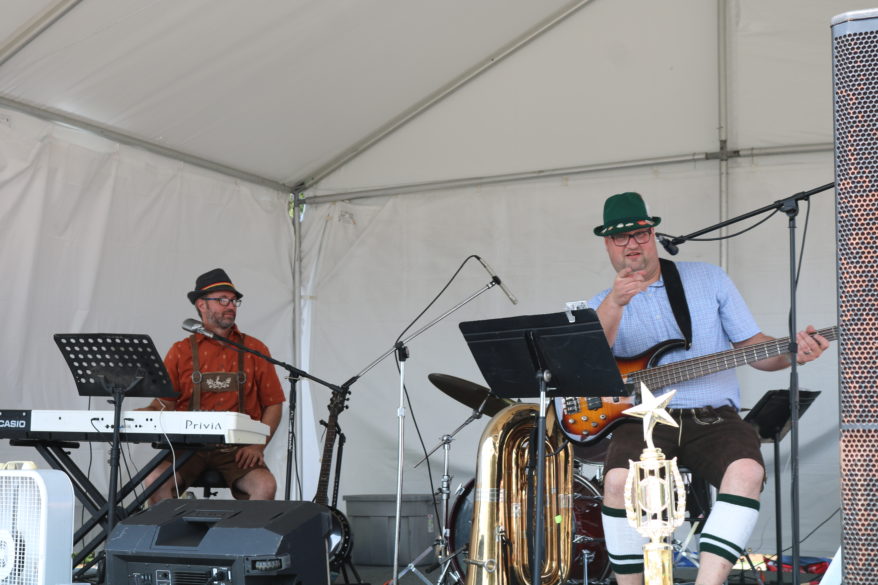
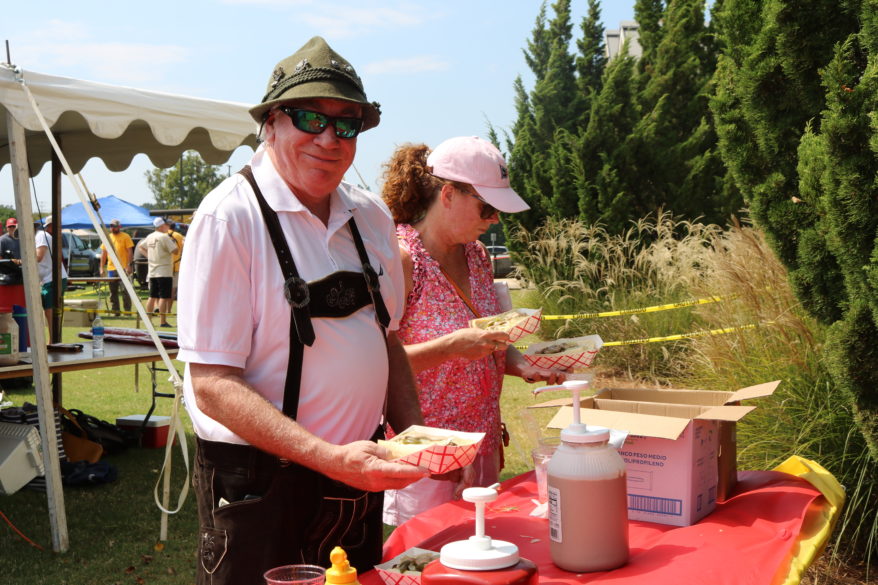
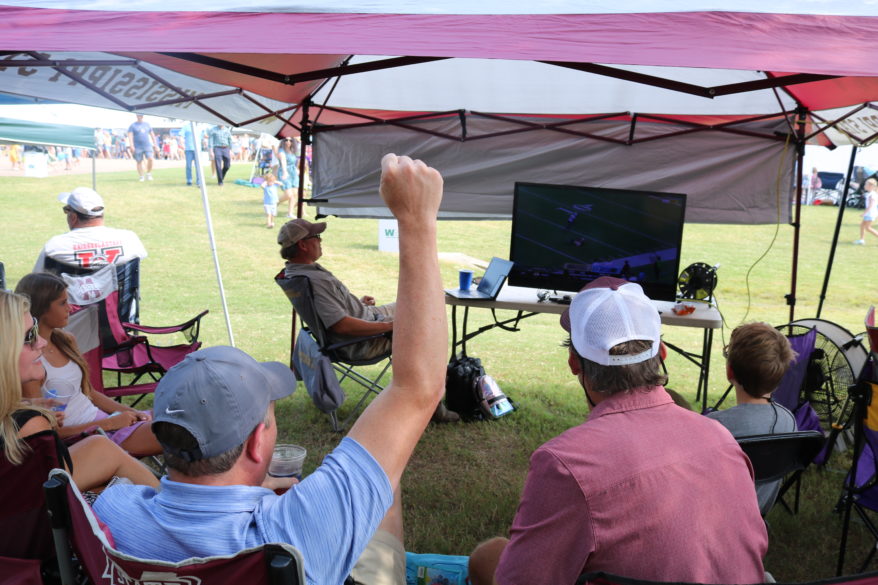
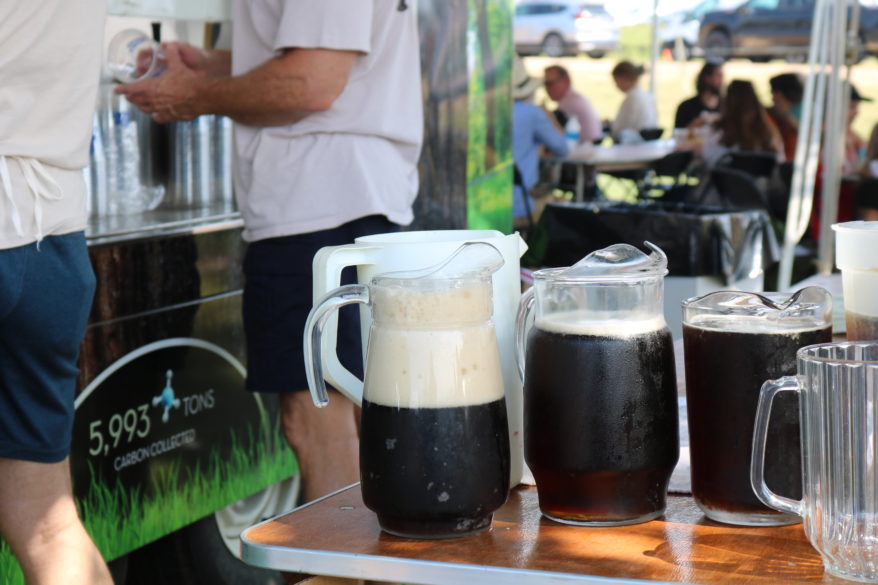
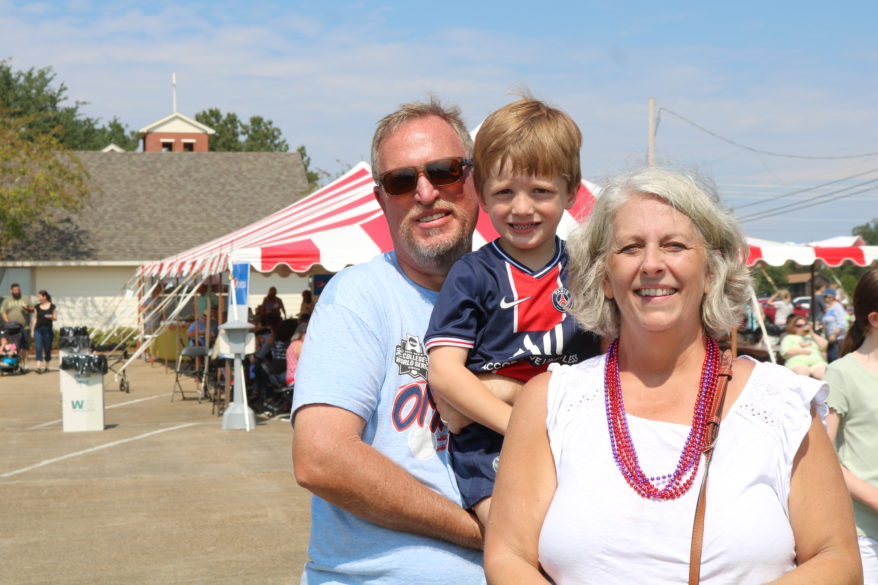
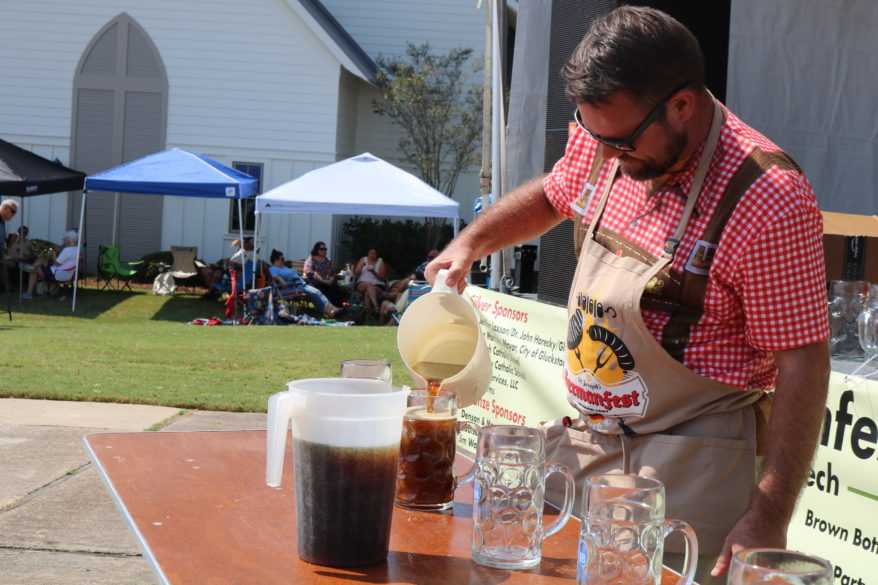
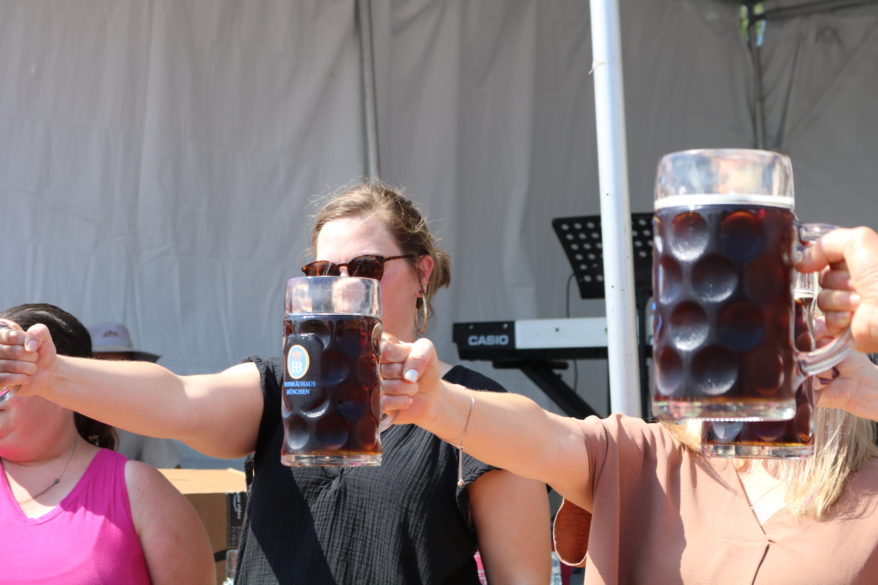
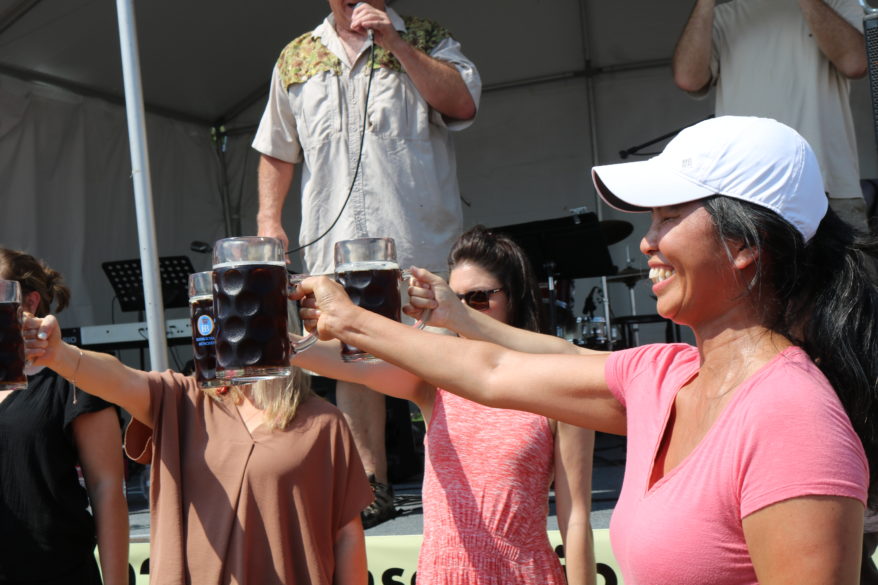
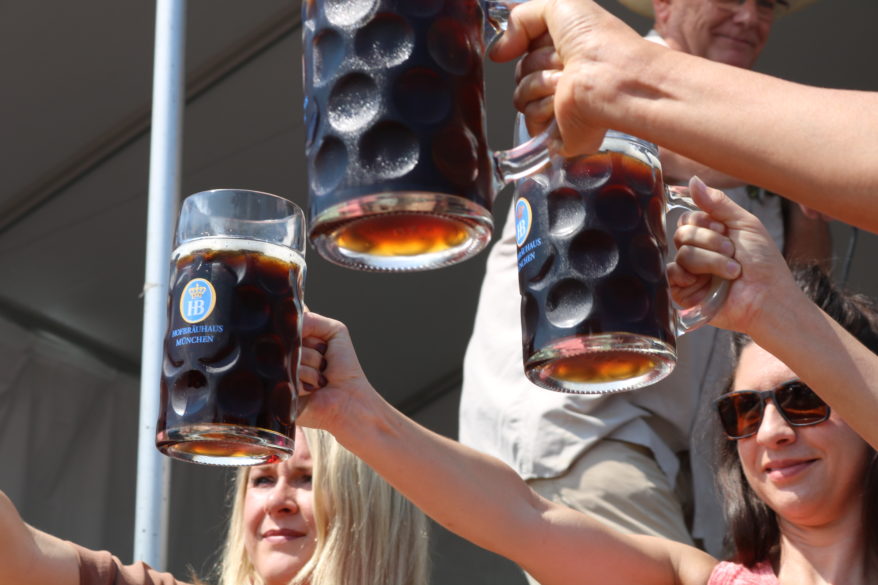
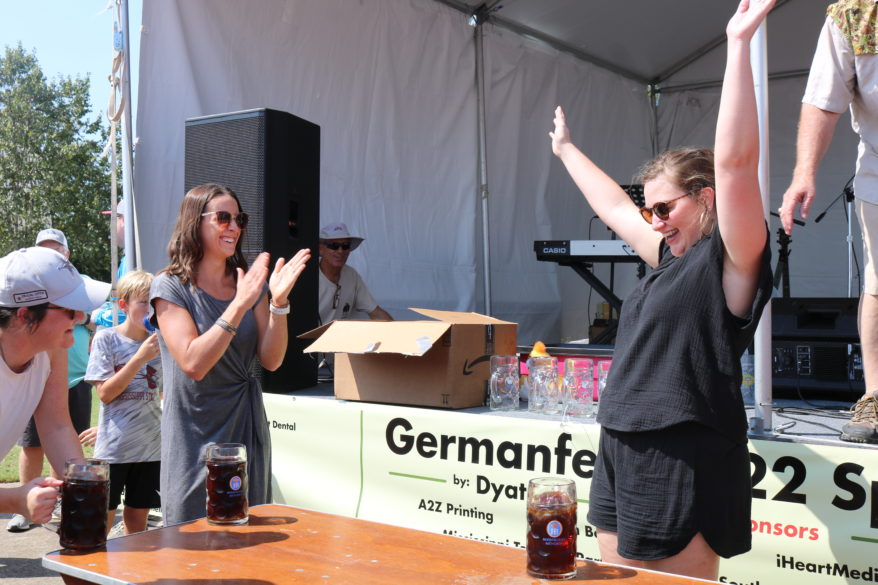
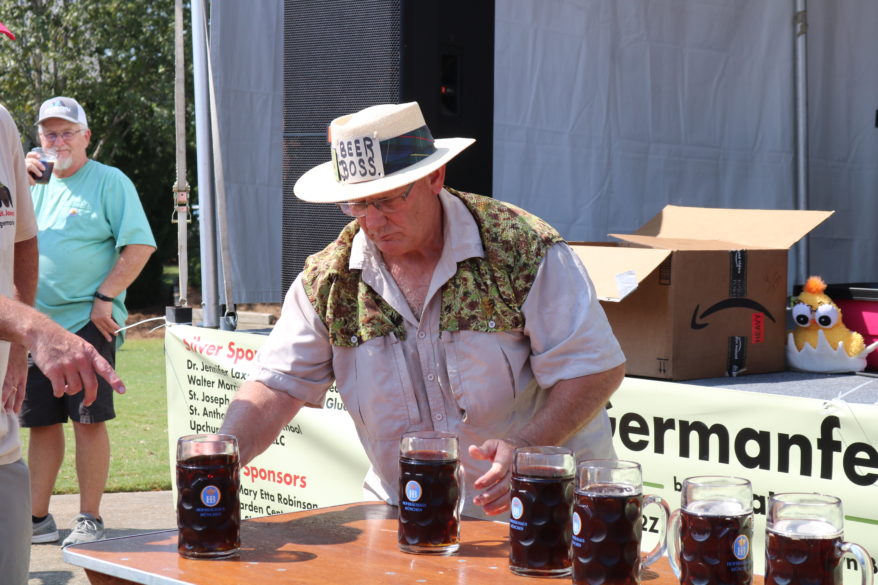
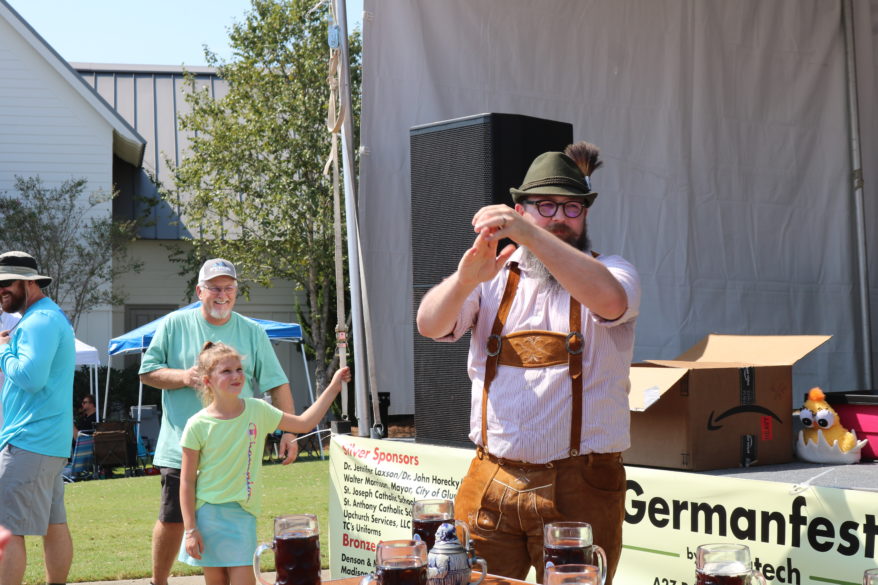
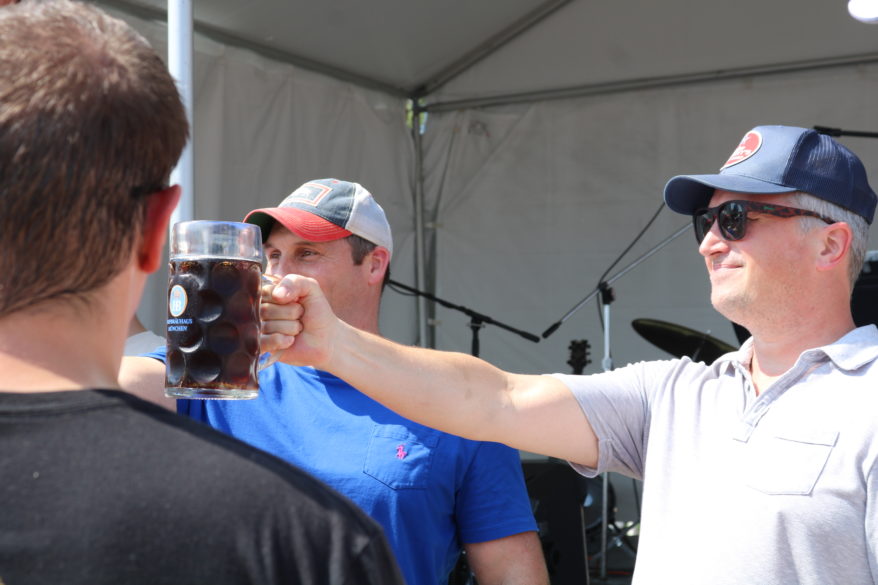
SOUTHAVEN – Sacred Heart School’s seventh grade baptism study included the students making their own candles. Pictured is Fernanda Bermudez working on her votive candle. (Photo by Sister Margaret Sue Broker)
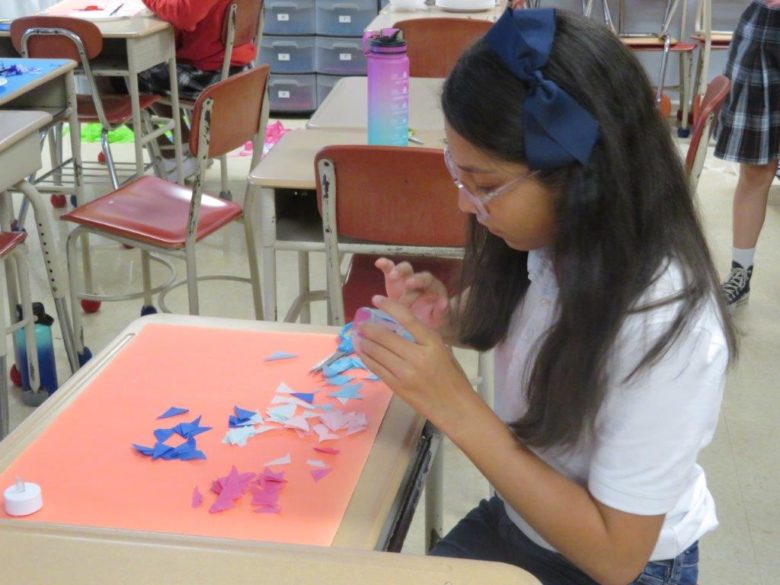
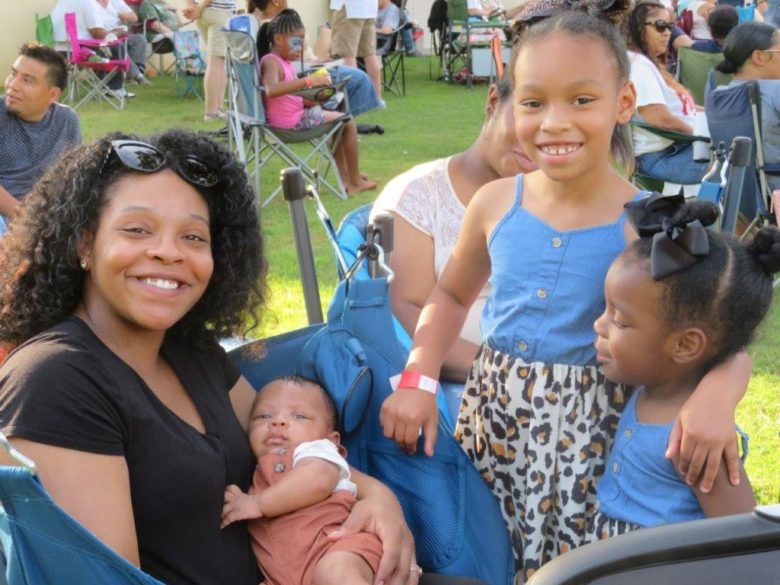

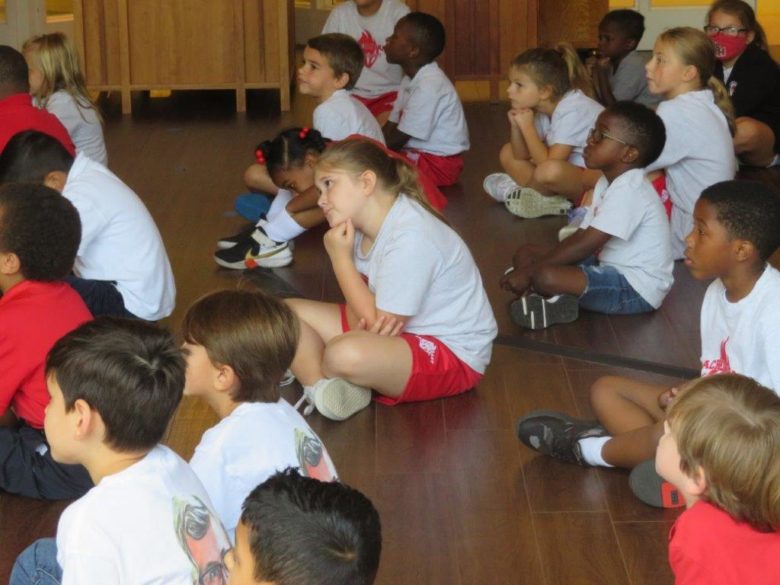
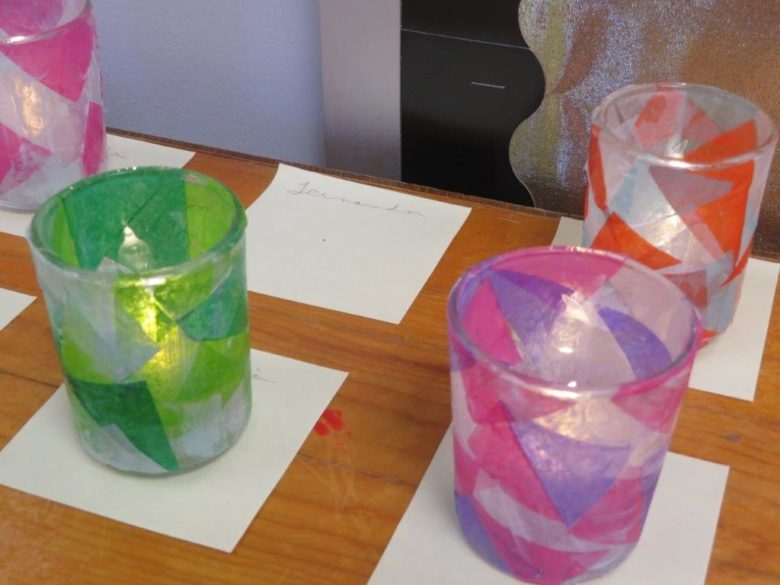
MERIDIAN – St. Patrick assistant teacher, Jasmine Jordan aids kindergartener Matthew Rush with finger painting. (Photo by Emily Thompson)
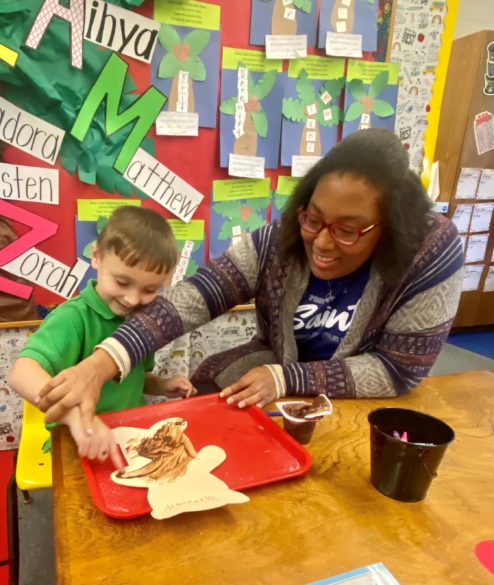
MADISON – St. Anthony third graders work on a science project in Ms. Holder’s room. Pictured left to right: Isaac Smith, Aspen Taylor, Sydney Beard and Cruz Warwick. (Photo by Kati Loyacono)
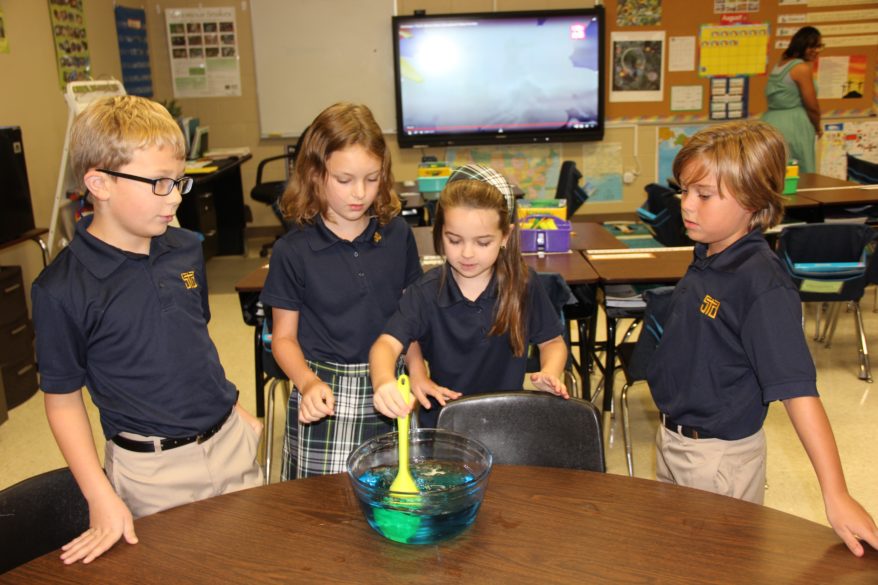
VICKSBURG – AP Biology students participated in an Animal Behavior Lab exercise learning the response to environmental variables. Katelyn Clark and Sara Beth Johnston observed animal behaviors relating to environmental stimuli and courtship behaviors. (Photo by Lindsey Bradley)
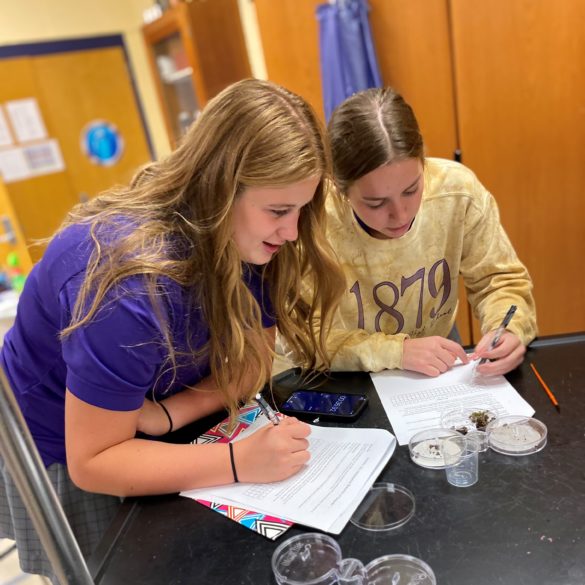
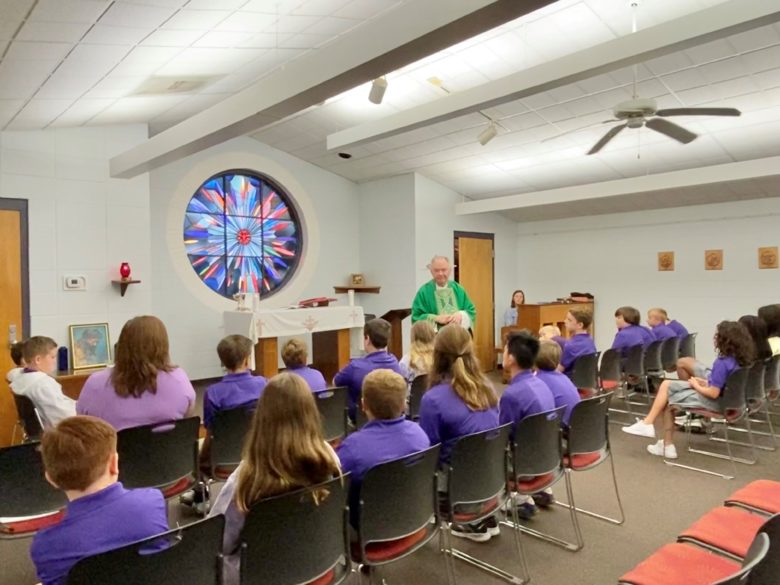
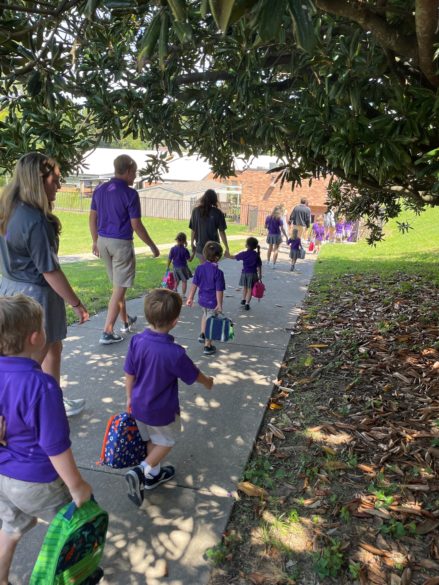
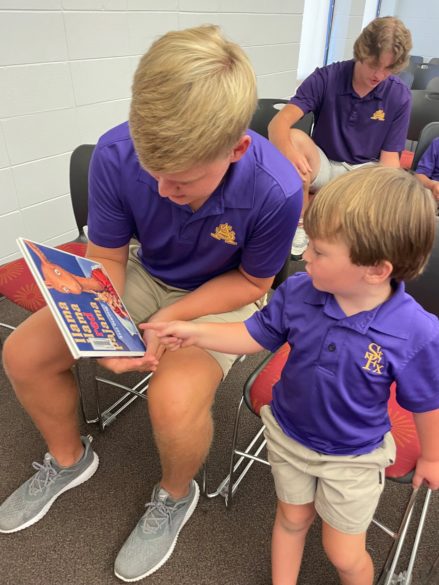
JACKSON – The shape of the week was a square and these St. Richard PreK-3 students got “hands on” when making their very own squares. Clockwise from top: Josie Ball, Oliver Metzger, Townes Crews and Louise Simmons. (Photo by Tammy Conrad)

FLORA – After a time out with their coach, the Jr. Bruins march back for another play versus the Tri-County Academy Rebels on Thursday, Aug. 25. The Jr. Bruins are made up of fifth and sixth grade students from St. Anthony and St. Richard schools. (Photo by Joanna Puddister King)
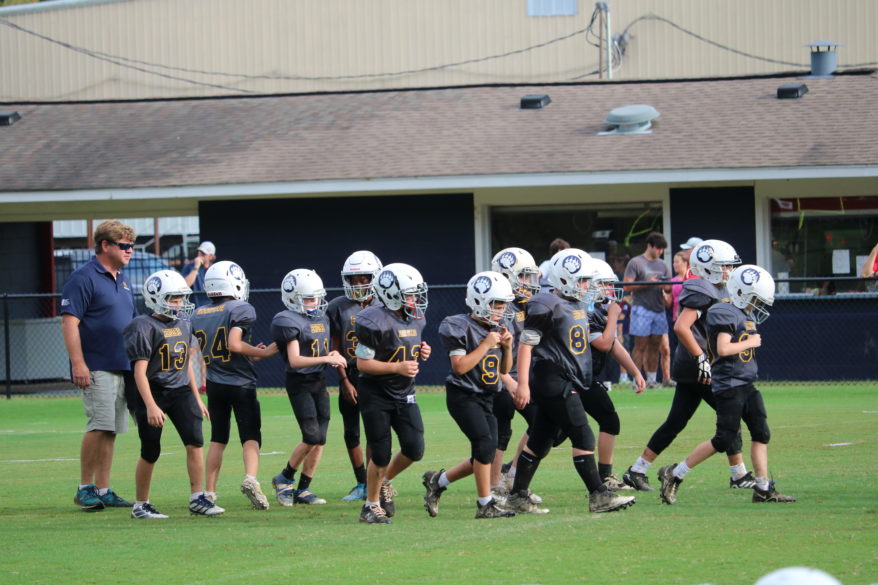

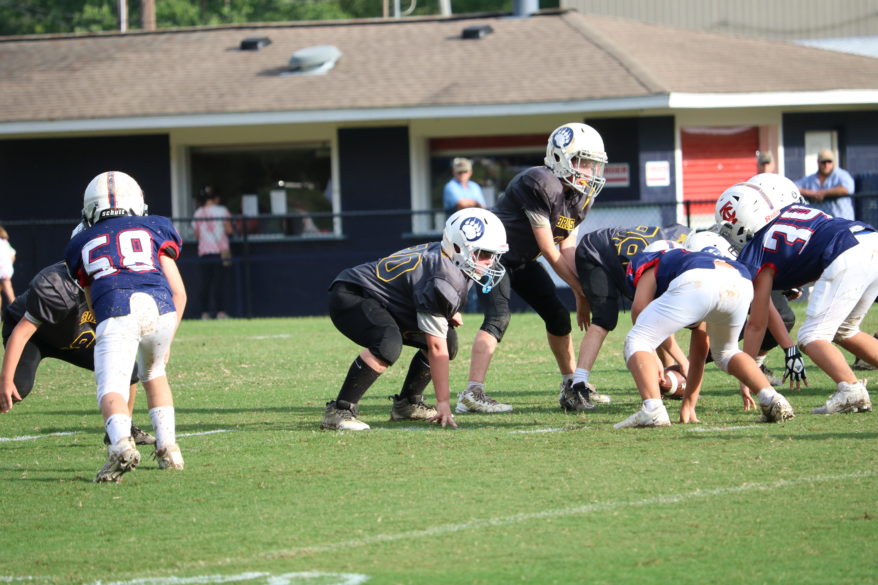
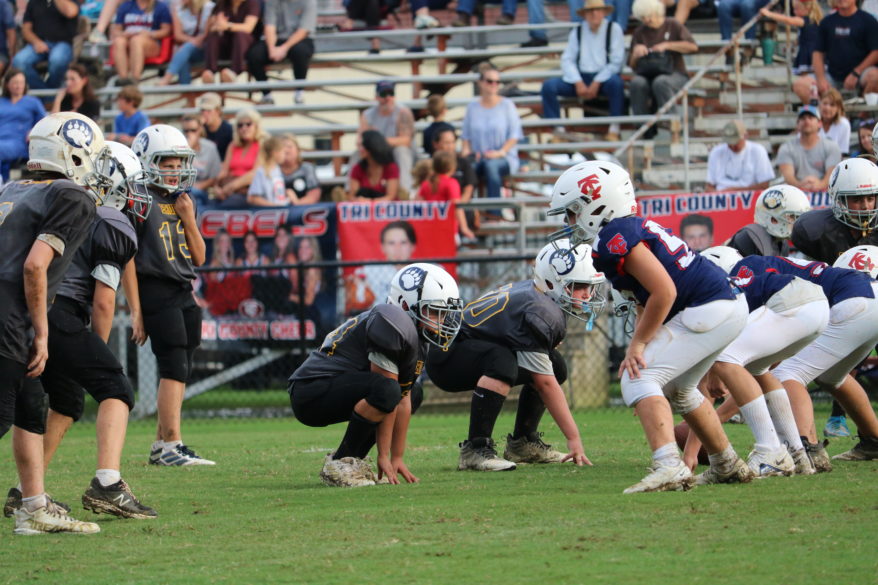
From the Archives
By Mary Woodward
JACKSON – In these From the Archives articles I have chronicled a lot about Bishop John Edward Gunn, SM, sixth bishop of our diocese. In this installment I would like to bring to light that Bishop Gunn was a highly sought-after retreat master. Bishops around the country would recruit him to give retreats to the clergy of their diocese.
Therefore, here is a description of his journeys across the country by train in August of 1918. World War I was still raging, and forest fires had been ravaging the western United States. It sounds vaguely familiar in some respects, but also gives a unique view of the development of the Northwest.
“On August 1st I went to Vicksburg where I remained a few hours, taking the night train to Memphis from there. I got the Chicago train at six twenty, reaching the Auditorium on August 2nd. There I heard of the birth of Roy McCanna’s baby – long expected, much prayed for and the most welcome youngster that ever appeared in Wisconsin. I phoned my congratulations from Chicago, and I was requested to stop over on my way to St. Paul to baptize the youngster, which I did on Saturday, August 3rd.
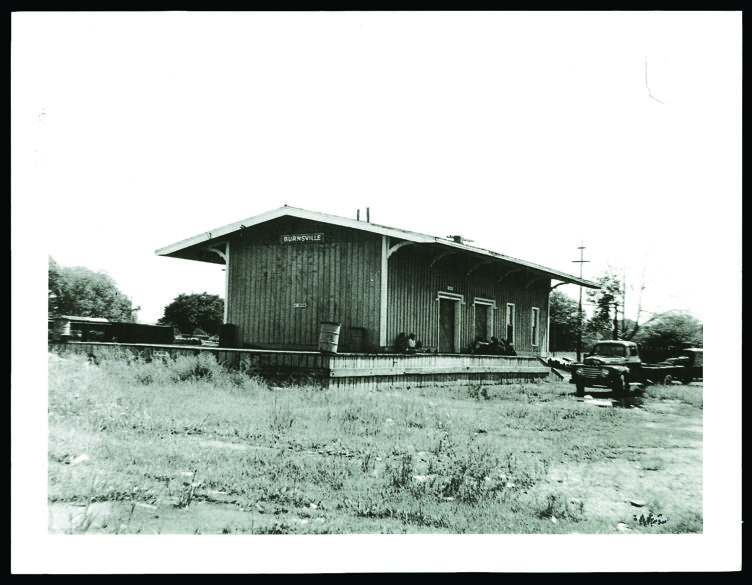
“I left the same night for St. Paul’s and reached the Marists on Sunday, August 4th. I called to see Archbishop Ireland and found him in a dying condition in his new home on Summit Avenue. The Catholics of St. Paul had purchased the finest house in the city and donated it to the Archbishop. He was brought into it, put to bed and he actually never saw the house that was his own.
“I left for St. Cloud on August 5th and went to St. John’s College, the Benedictine Monastery, where I was booked to preach a retreat for the clergy of the Diocese of St. Cloud. I started in on Monday and ended on the following Friday. Bishop Busch of St. Cloud was persuaded by Archbishop Ireland to get me to give the retreat, owing to war conditions which were painfully acute in that section of Minnesota.
“Practically all the Priests and nearly 90% of the Catholics of St. Cloud were pro-German. The Bishop, of German Extraction, was very American and this created a natural state of war or at least of ill-feeling between the Catholics and the Bishop. I was supposed to smooth things out and while the Priests resented a retreat in English, one of the first every given in that language in the diocese, still they treated me very well.
“St. John’s College was a place worth seeing. The community was very large, the Monastery grounds covered 1000 acres, the monks were farmers as well as priests and the place was as near ideal as could possibly be imagined.
“There was a lake in the center of the property which was so thickly stocked with fish that it was almost a crime to throw in a hook and line. It was not fishing – it was slaughter.
“I left St. Cloud satisfied with myself and I think left the Bishop and his priests pretty well satisfied and came to St. Paul where I stopped at the Ryan Hotel. I spent the night of August 10th with the Marists on Cedar Street and helped them out on Sunday and left Sunday night over the Chicago, Milwaukee & St. Paul for Seattle.
“On the train, I met Archbishop Messmer of Milwaukee, and we exchanged a lot of thought between Milwaukee and Spokane. The Archbishop had put his parish church under interdict and excommunicated three or four Polish priests on the day on which we met, so I think he was looking for shelter.
“The trip from St. Paul to Seattle was over some of the wildest parts of America. There was not a town of any importance after leaving Minneapolis. The Rockies were not as wild further South.
“The one thing that was a novelty to me was to go through a country that had been a raging furnace for over two years and a half and defied the power of the United States to put out the forest fires. The country showed the ruins of fire and looked as sad a spectacle as could be imagined.
“On the trip, I saw for the first time a railroad actually controlled and propelled by electricity. The big Mountain engines could not do the work and tremendous electric power houses were installed all along the line and engines equipped to suit. We zig-zagged around the Mountain and took a day to travel a bee line distance of thirty or forty miles. The trip was pleasant as we reached Seattle on August 14th.”
In my opinion, bishops are not always appreciated until years after their tenure. Bishop Gunn certainly had his moments during his time in office that caused consternation among clergy and faithful, but we are very fortunate to have his diary to share his adventures in the early 1900’s from his unique perspective. Now, more than 100 years later time sheds light on the wisdom of his actions.
In our next installment, we will continue this journey with Bishop Gunn as he shares his keen wit and intellect across the country.
(Mary Woodward is Chancellor and Archivist for the Diocese of Jackson.)
By Joe Lee
MADISON – Known nationally for his business books and Ted Talks, Oxford native David Magee seemingly had it all before his beloved son William – who lettered in track at Ole Miss and attended Honors College – died of an accidental drug overdose in 2013, a year after graduation.
But it wasn’t just William who was hurting at the time of his death.
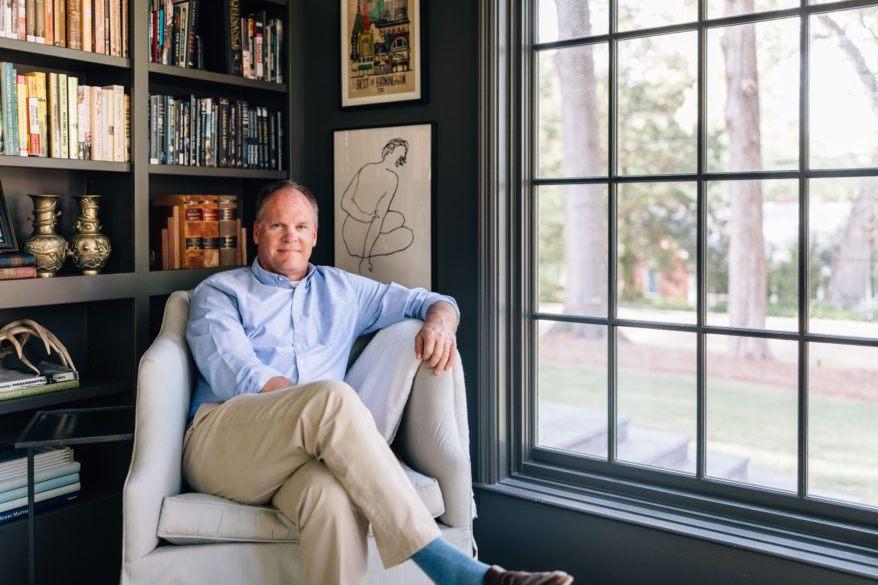
“I had to go look at what happened in our family,” Magee said. “How did what looked like a picture-perfect American family chasing the dream get completely shattered?”
Author of the critically acclaimed memoir, Dear William, Magee is the keynote speaker at this year’s Journey of Hope luncheon, set for Tuesday, Sept. 20 at the Jackson Convention Complex. Much more than simply a tribute to his late son, Dear William is a brutally honest look at a family that had been in crisis for many years.
The long, hard gaze into the mirror began with Magee himself, who was adopted and unaware of his birth parents’ identity until well into adulthood.
“I lived a great life in this wonderful university town,” he said of Oxford. “We knew everyone and could walk to the Square. But my house was very dark because there was a lot of depression and emotional pain inside me.”
“I did not know who I was, and the lack of sense of identity was something I didn’t deal with well. I tried to pretend it wasn’t there with alcohol and prescription Adderall.”
In addition to losing William, Magee and his wife, Kent, nearly lost their son Hudson to an overdose. Magee’s infidelity led to divorce before he and Kent remarried. But as facing their fears put them on a successful path to recovery and healing, Magee consulted his family about going public with everything they’d gone through in hopes of benefitting those in crisis.
“It took some years, but I had their blessing to do it – Kent, Hudson and our daughter Mary Halley,” he said. “The strength of Dear William is not that we lost him, but that we found joy and recovery together. The book applies to families who feel like they’ve lost something; they can get joy beyond what they ever imagined. It also applies to communities. We look around and see despair, but it is doable. You must have a plan and work hard to execute it.”

What would Magee, who is helping launch the William Magee Institute for Student Well Being at Ole Miss, tell his twenty-one-year-old self?
“To believe in yourself,” he said. “The self-doubt is so poisonous. When you’re going through a hard time, it’s easy to point fingers at others. The twenty-one-year-old me had all these dreams of the American family I would have, and I coached my three children in most every sport they played. I taught Sunday school. I was on the City Council in Oxford.
“I was checking all the boxes,” he continued, “but rather than having a strong faith foundation and a strong belief in myself, I had a lot of self-doubt. I wish I could tell that version of me to get some counseling. I could have saved myself and my family a lot of pain and grief.”
Magee will have a strong message for parents at the Journey of Hope luncheon.
“Their own fears will often get in the way of raising their kids,” he said. “We want our children to have the best of everything. If warning signs flare up, the parents may fear that if they do ask for help – such as counseling – they may be labeled.
“A lot of kids have lost their joy. A lot of them tell us, ‘I’m making A’s, I’m on the sports teams, I’m on the homecoming court. Why do I feel so bad?’ We should worry about exposing them to what will help them, such as a good education. Faith is a big, positive part of their joy, while misuse of alcohol and substances steals that joy. We must do a better job of educating parents in navigating that path.”
By Joanna Puddister King
JACKSON – On Saturday, July 16, Bishop Joseph Kopacz ordained six men into the permanent diaconate at the Cathedral of St. Peter the Apostle. The men spent the last five years in formation, studying spirituality, canon law, homiletics and learning how to administer sacraments.
To full pews and those standing behind at the entrance to the Cathedral, Bishop Kopacz acknowledged the evident joy and love for Mark Andrew Bowden of St. Jude Pearl, Dien L. Hoang of the Cathedral of St. Peter, Dixon Wesley Lindsay of the Cathedral of St. Peter, John Anh Pham of St. Michael Forest, David Preston Rouch of St. Michael Vicksburg and Anthony William Schmidt of St. Paul Flowood, being ordained to the diaconate.

“The joy is so obvious this morning as we come together in the Lord … to celebrate so much of our tradition of faith … and in the ministries that are such a blessing for our church and our parish communities,” said Bishop Kopacz. “And this morning, we celebrate the great gift of the diaconate.”
In his remarks about the readings, Bishop Kopacz pointed out the sacredness and gifts of the office of the diaconate.
“As we appreciate over a long tradition, nearly 2000 years, its service in Jesus Christ. Its His ministry and right at the beginning the Apostles realized we need to designate this and we need to select those who are going to be faithful to the Lord and to the needs of the communities with whom they are entrusted,” said Bishop Kopacz.
“So, we continue that many years later and the church has indeed worked with you over these past five years – give or take – to arrive at this moment,” Bishop Kopacz told the diaconate candidates.
He also reminded the new deacons that their ministry is one of service through the word, sacrament and charity.
Drawing on their experience of marriage or family experience, Bishop Kopacz acknowledged that “all have learned how to sacrifice, serve and care up to this point their lives.”
“Now opens another door where they will serve in the midst of our parish communities, serving the Lord and serving those entrusted to them.”
Ordained deacons are assigned to parishes in the diocese and they may administer baptism, serve at the altar at Mass and distribute the Eucharist; bring the Eucharist to the dying; read the sacred Scriptures to the faithful and on occasion, to preach; to administer sacramentals; to assist at and bless marriages and to officiate at funeral and burial rites.
Another group of men have begun their formation process in hopes of being ordained to the diaconate in 2026. For more information on the permanent diaconate visit www.jacksondiocese.org/offices/diaconate.
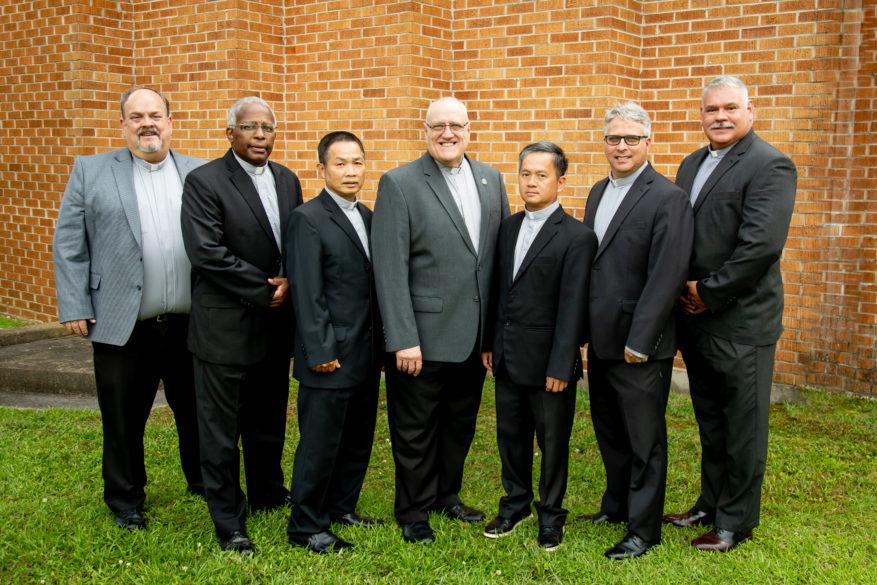
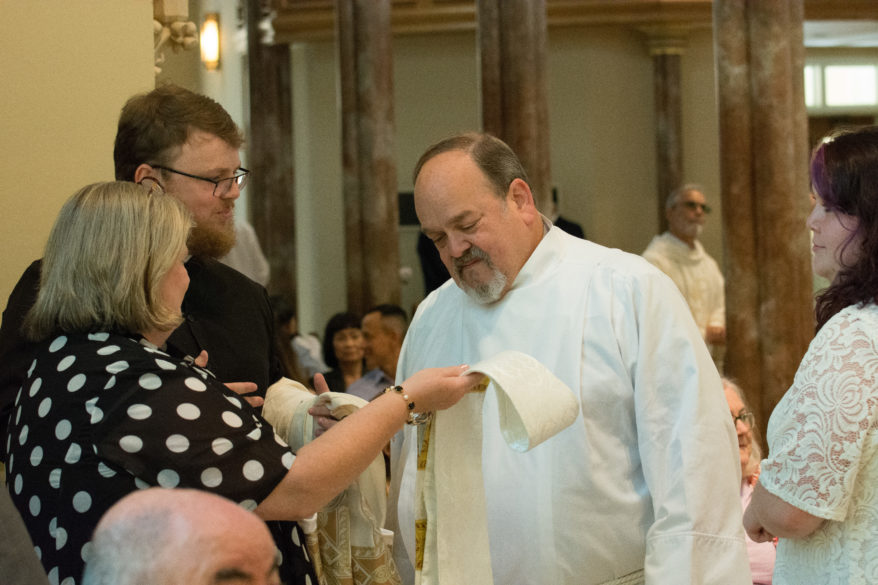
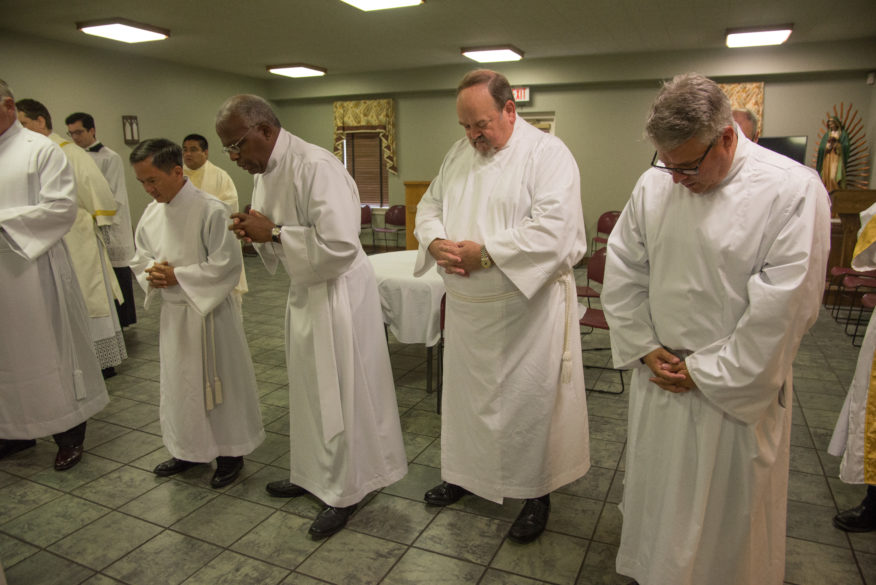
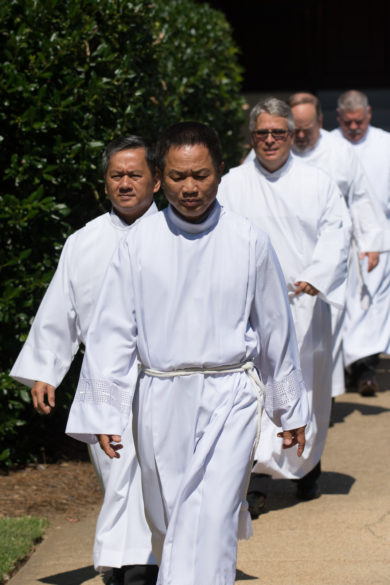
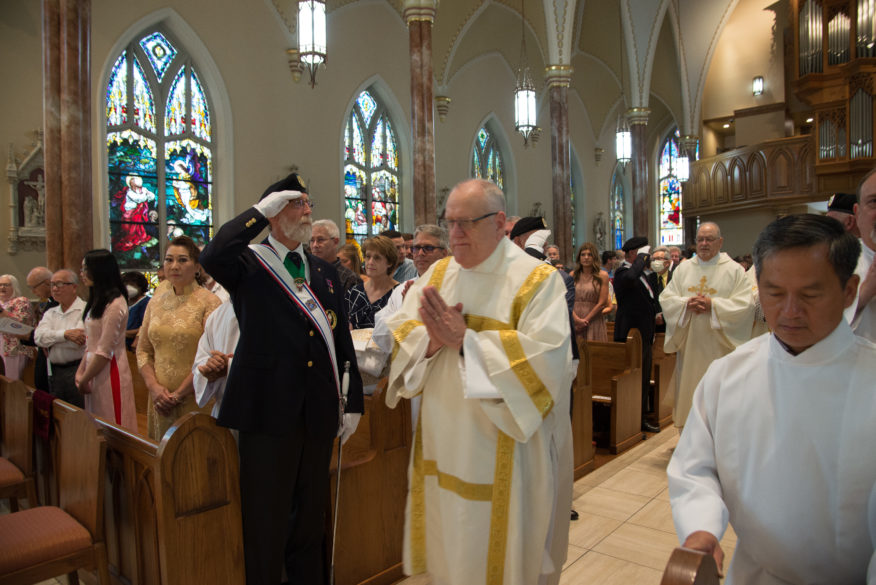

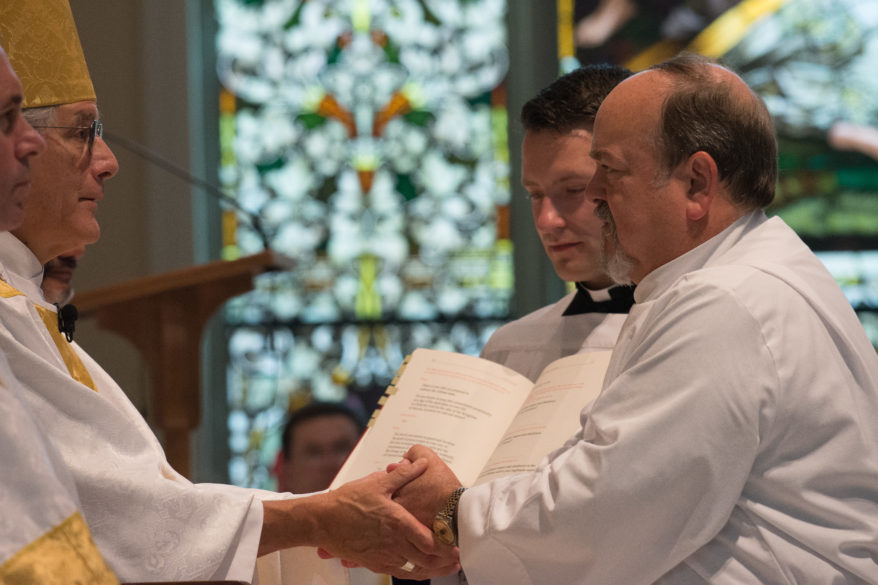

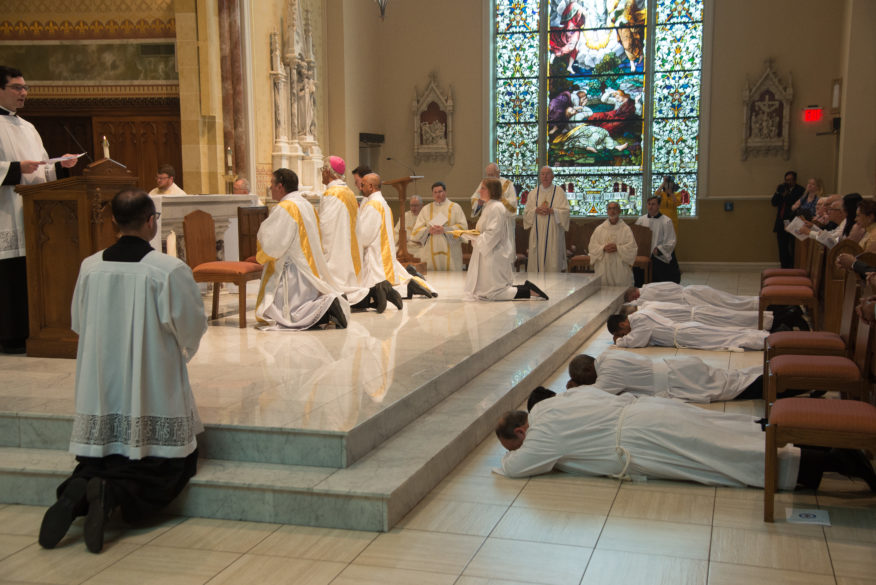
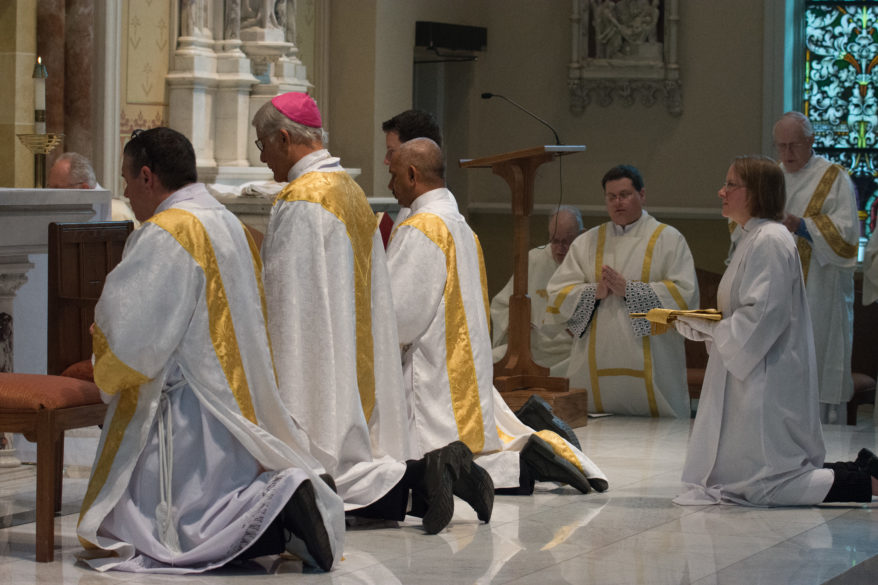
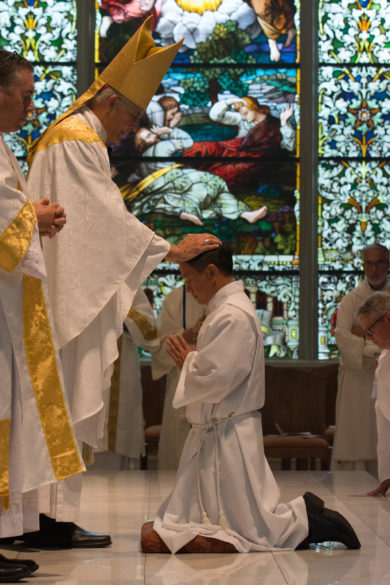
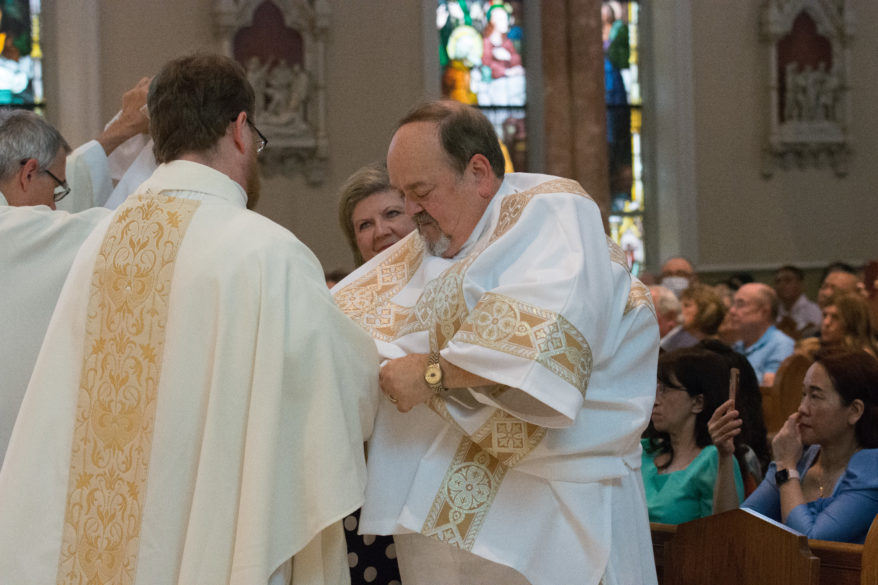
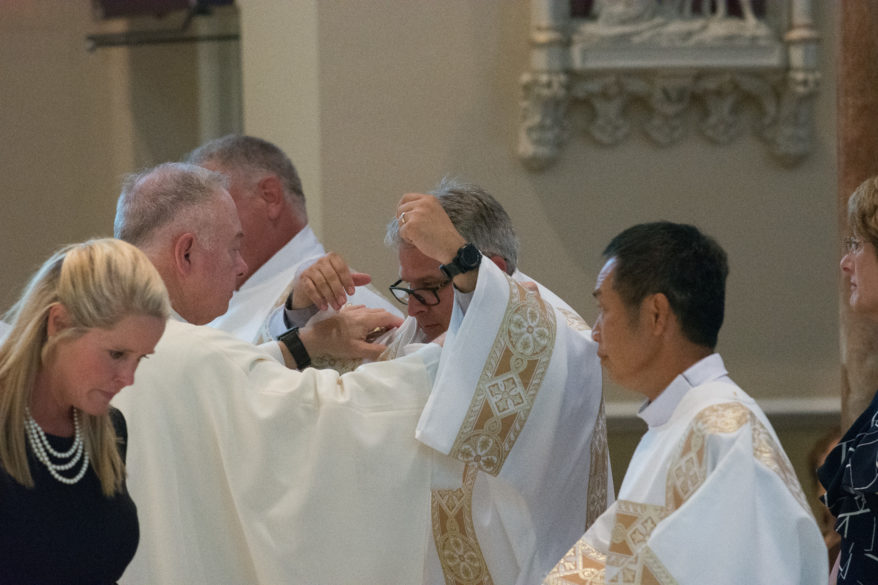

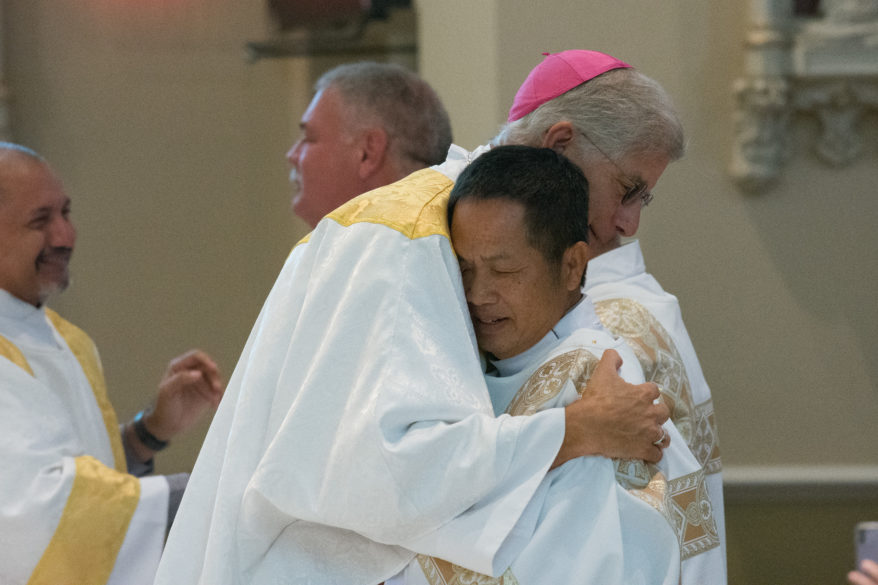
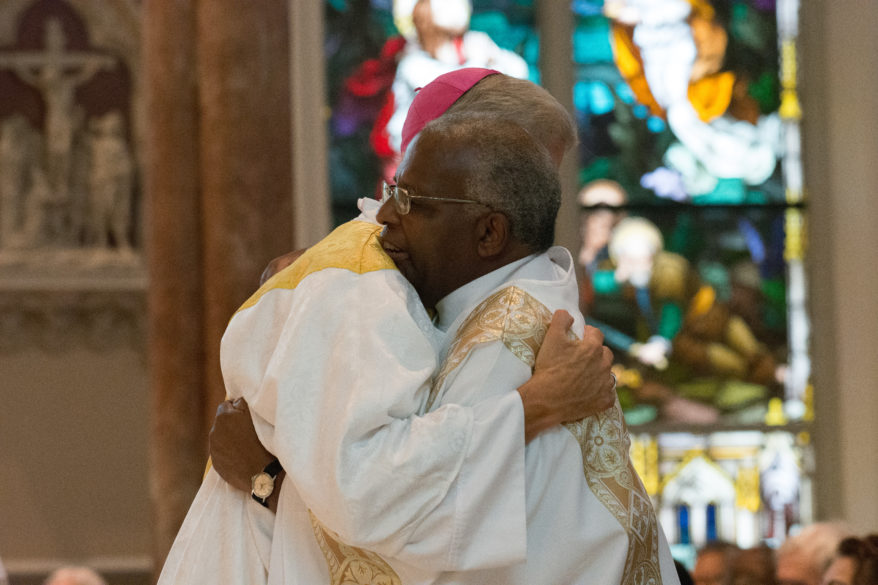
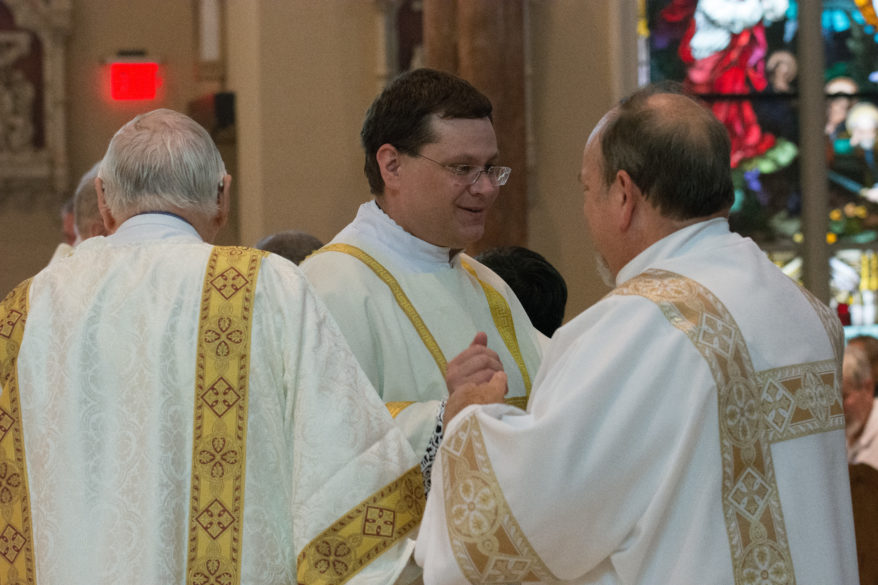
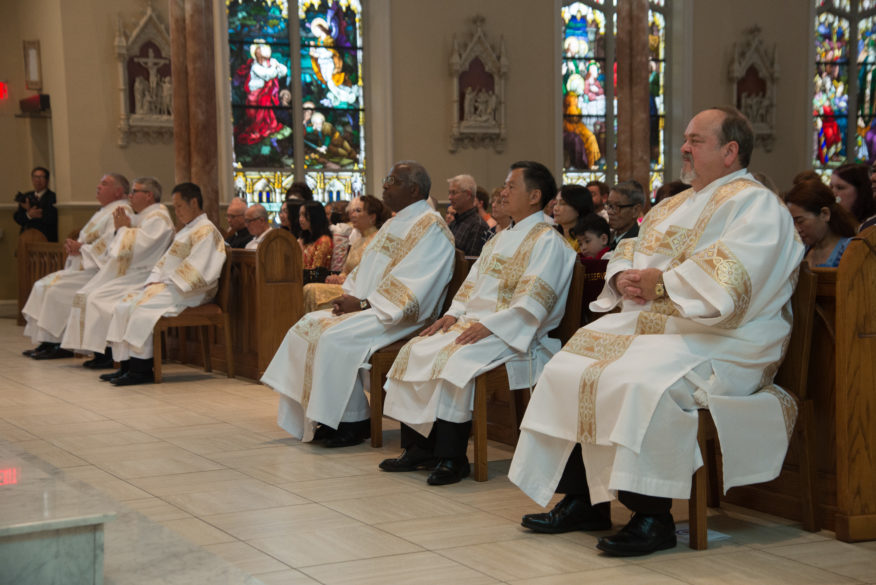
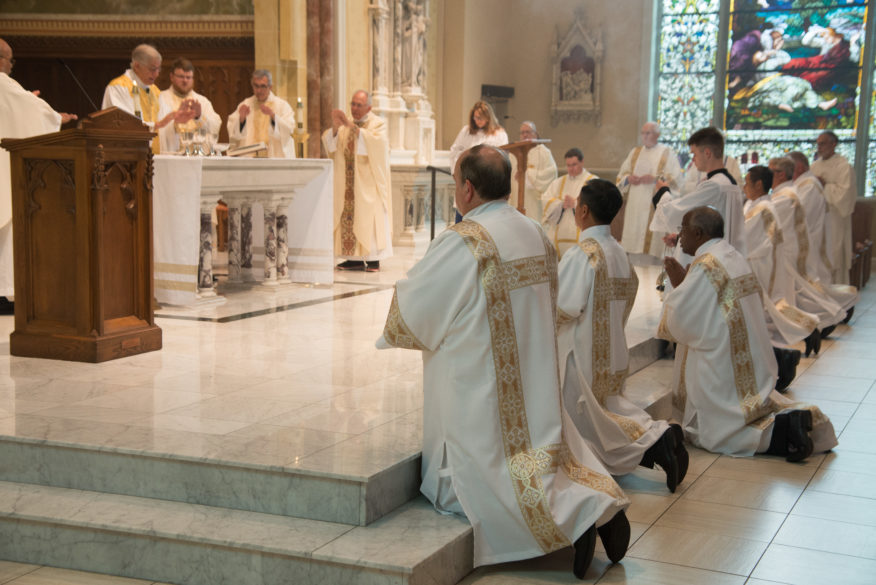
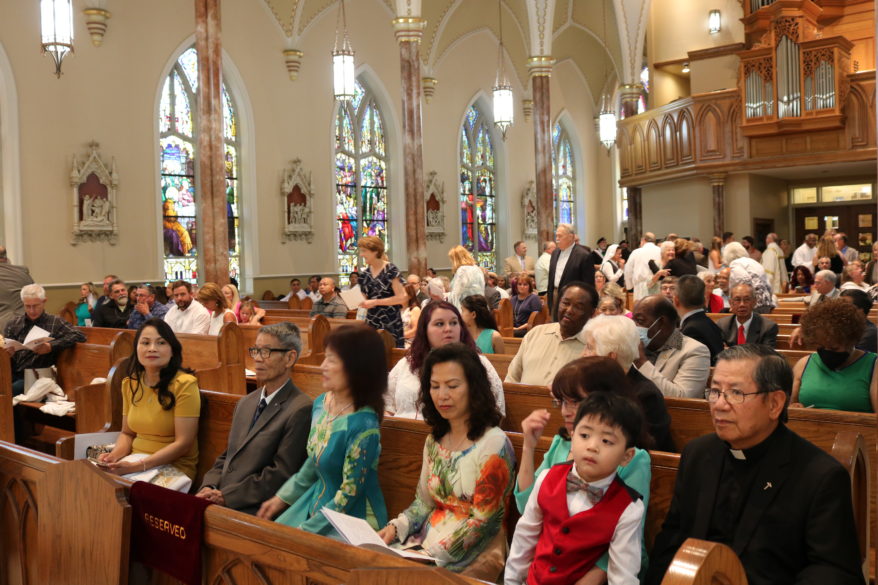

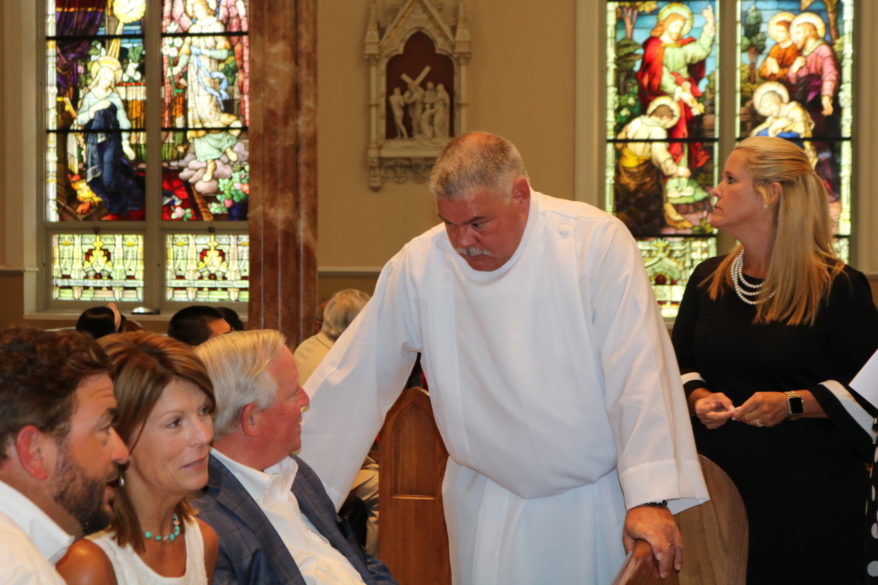
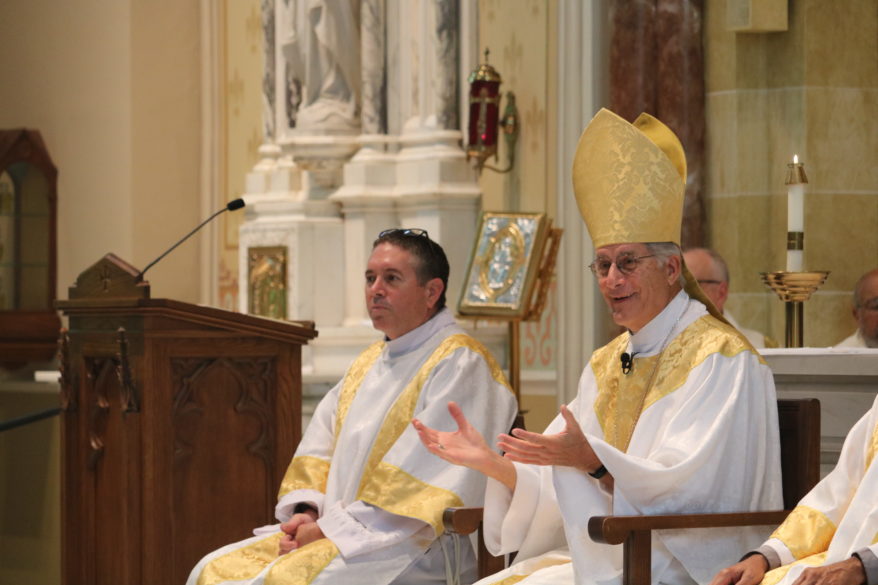
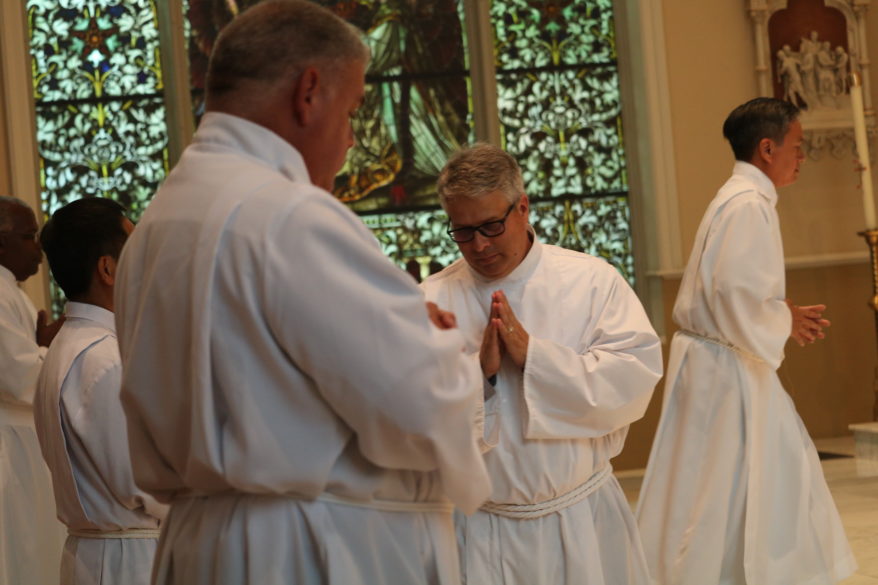
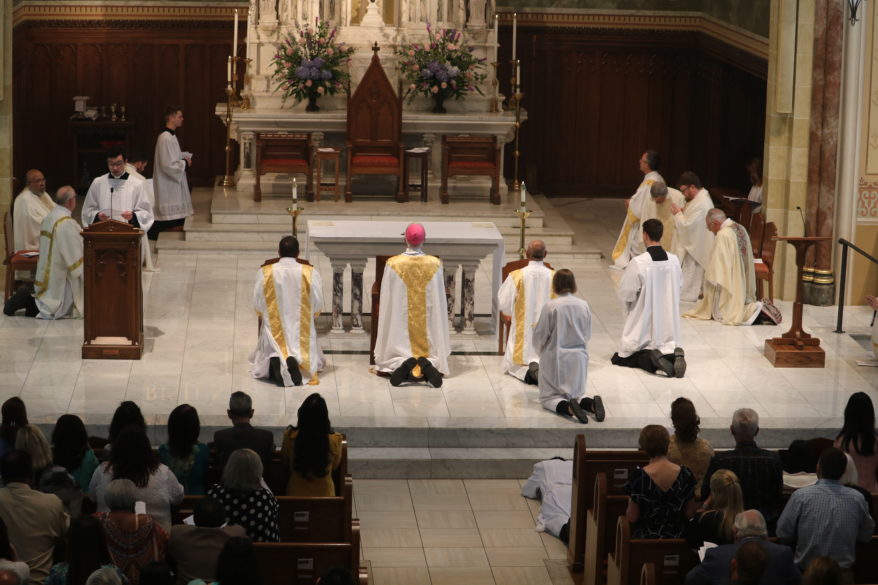
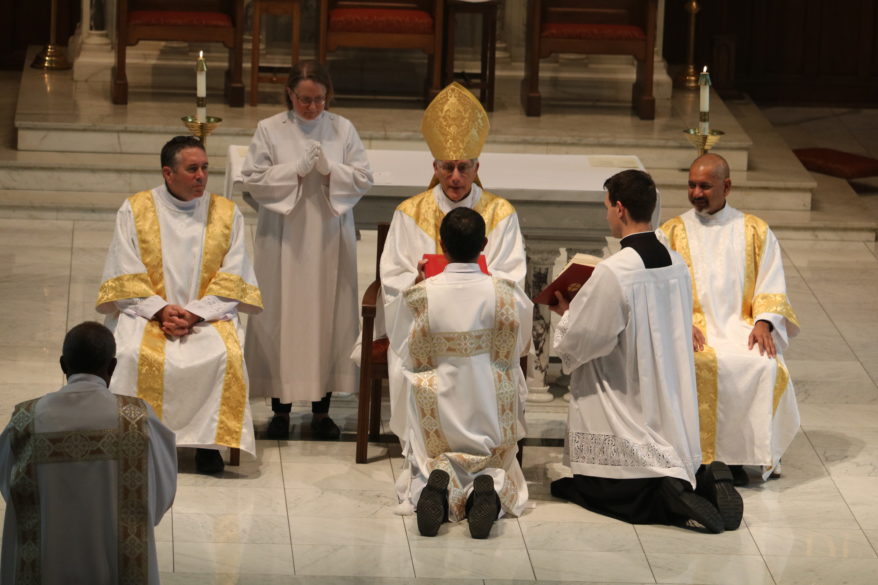
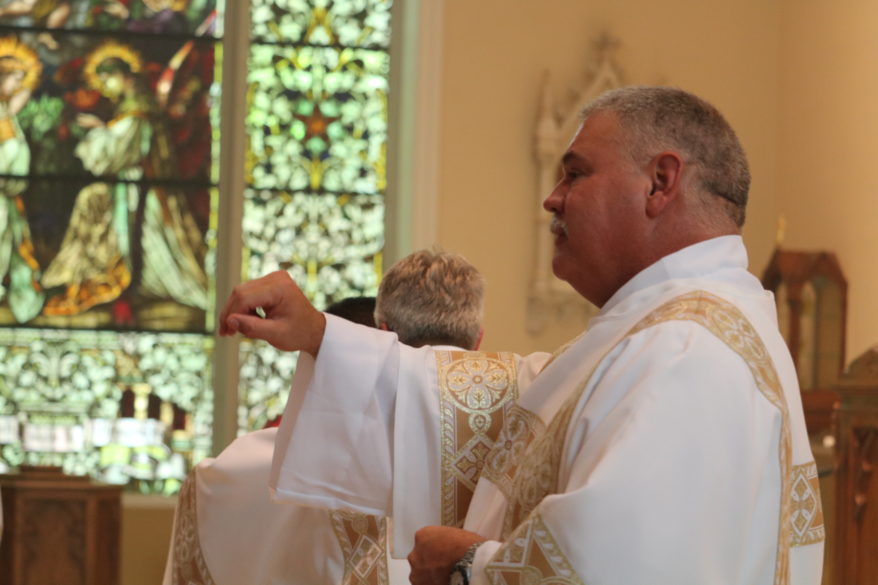
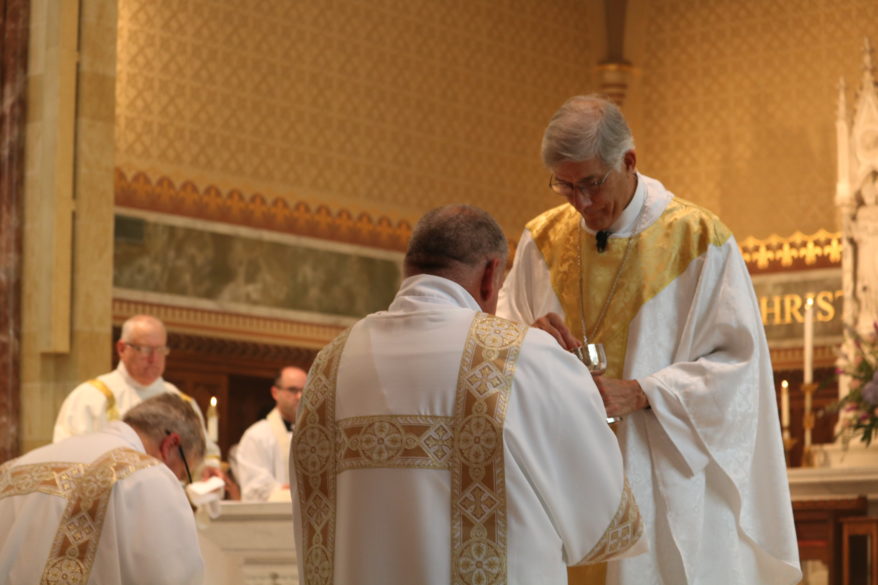
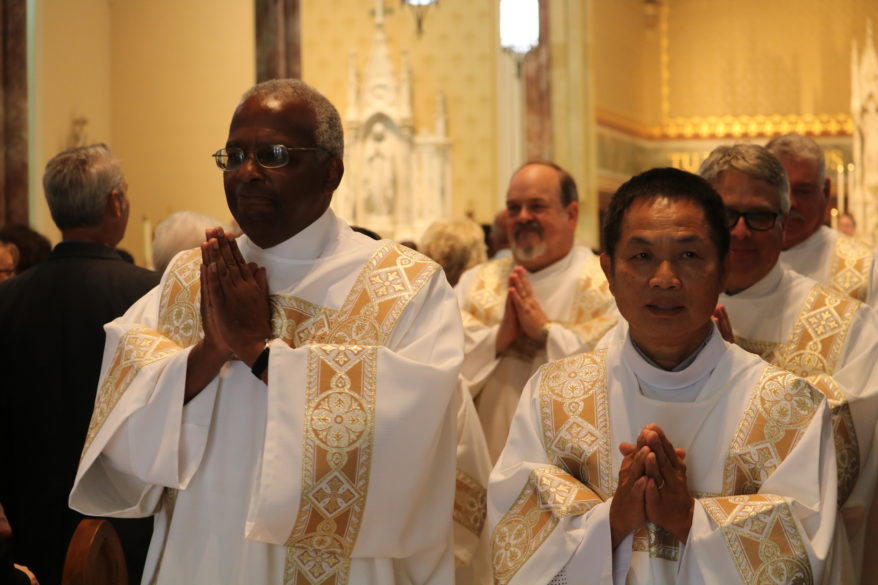
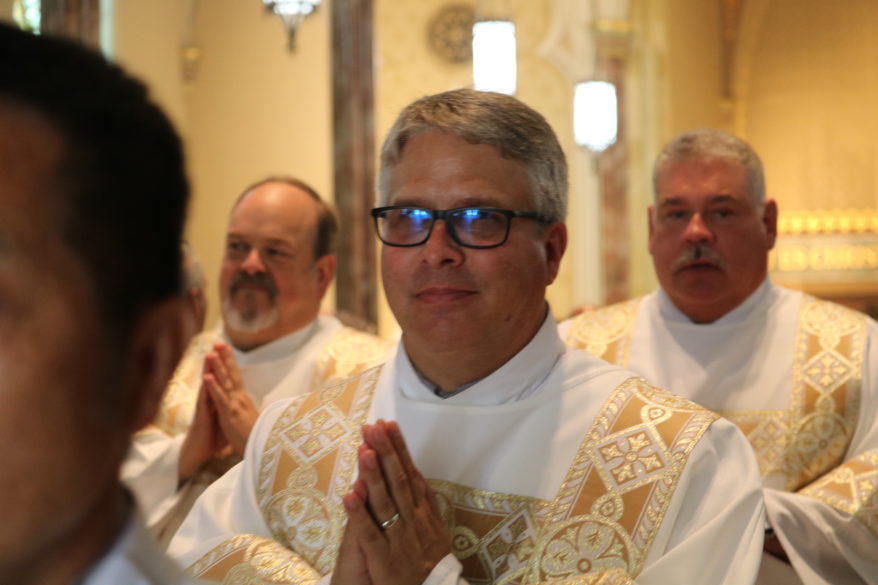
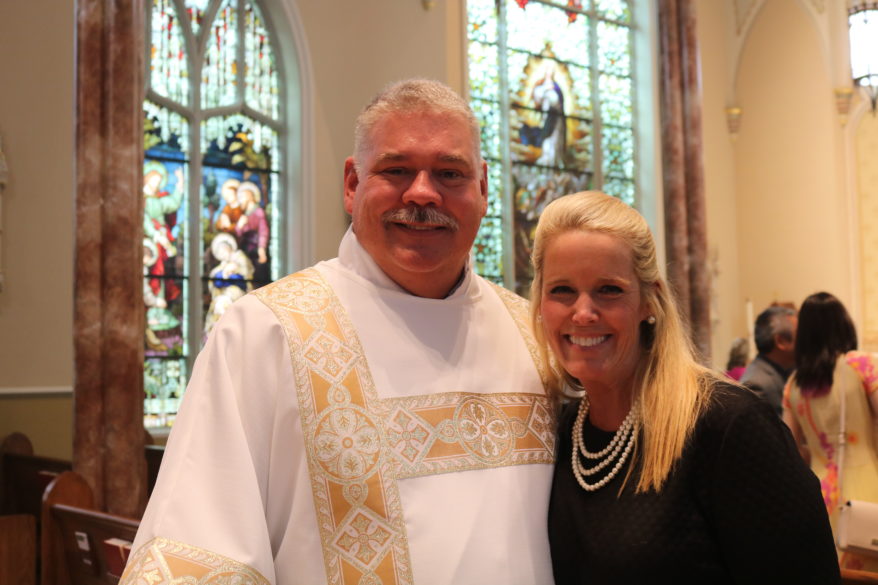

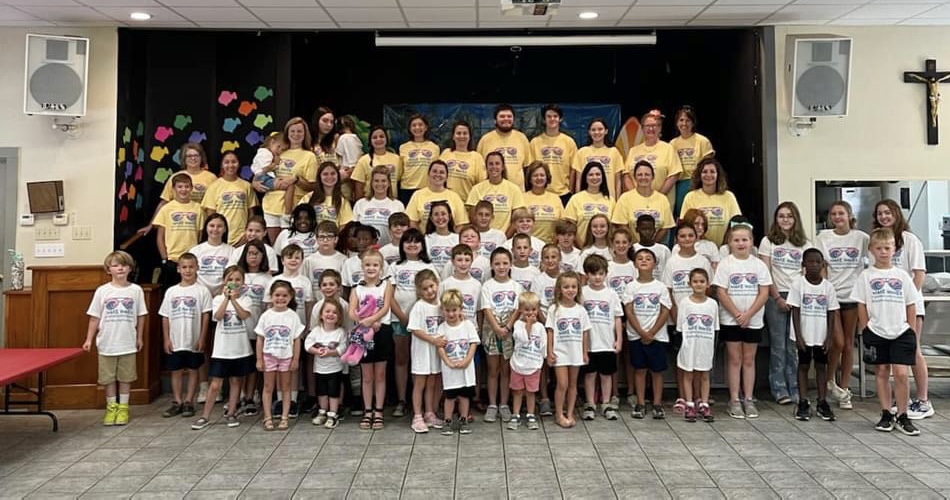
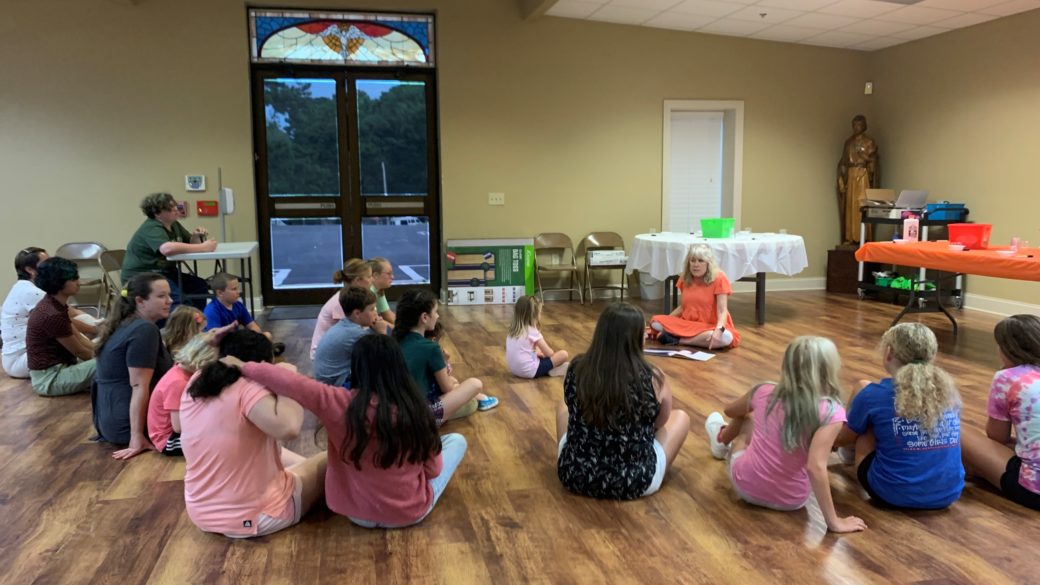

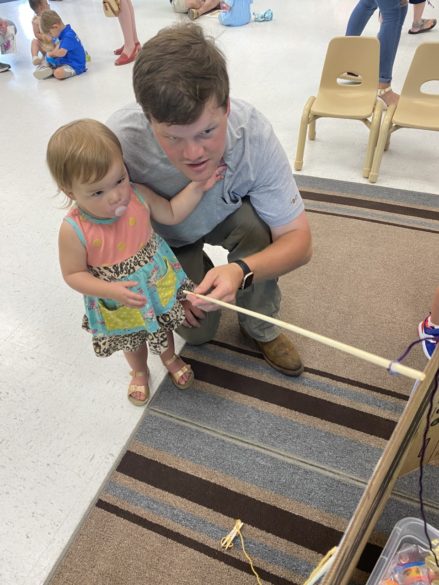
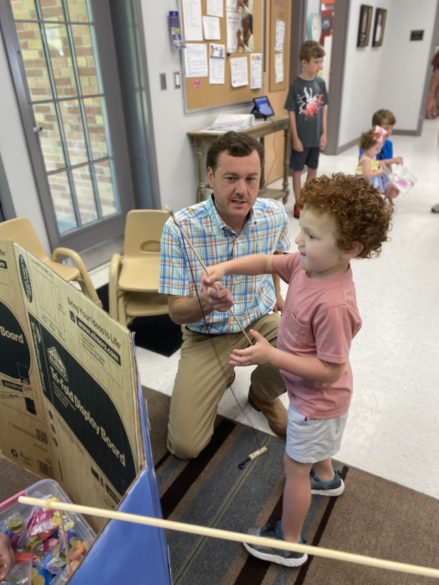
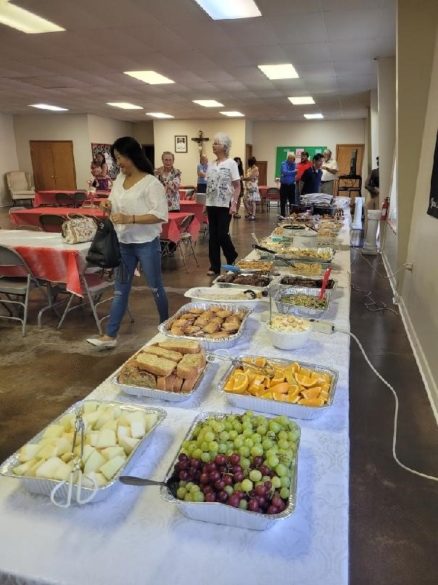
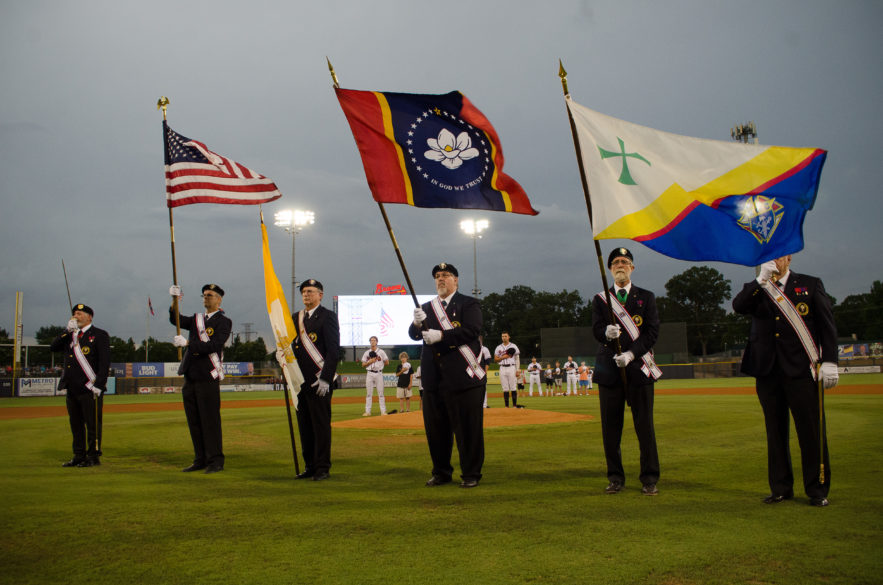
By Joanna Puddister King
WEST POINT – Carlisle Beggerly grew up Protestant, but an encounter with St. Augustine’s Confessions led him to seek out the church that the author belonged to.
“I felt called to the priesthood from the beginning of my conversion,” said Beggerly.
He then spent some time with a religious order, but then left and attended law school, all the while still feeling a call to priestly life.
The next step toward ordination to the priesthood for Beggerly was his ordination into the transitional diaconate on Saturday, June 4 at his home parish of Immaculate Conception in West Point by Bishop Joseph Kopacz.
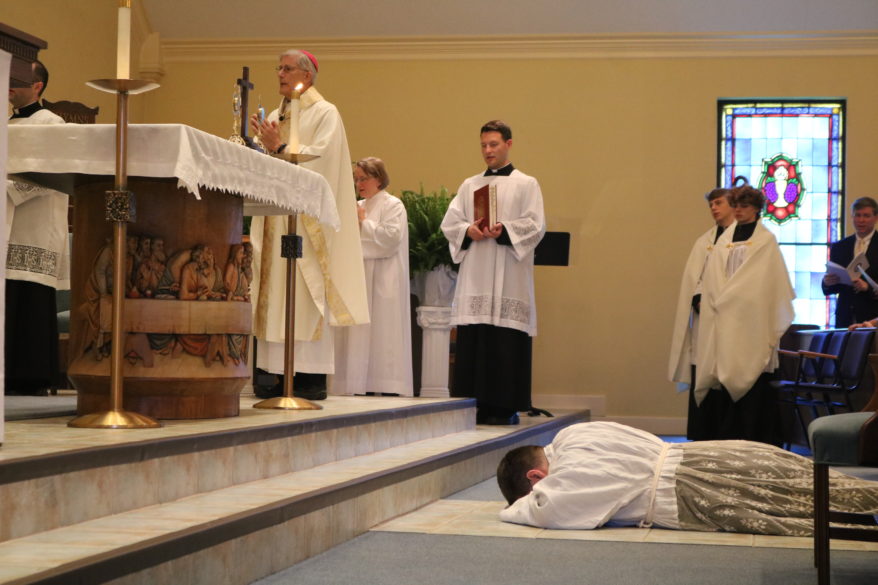
Typically, transitional deacons spend one final year in seminary before priestly ordination. Men ordained as transitional deacons do so with the intention of becoming a priest.
“During the transitional [diaconate] period, we try to place our seminarians in parishes that can give them a wide range of experiences,” said vocations director, Father Nick Adam.
“This will be the first time a seminarian can baptize a baby, witness a wedding or preside at a funeral. We want to make sure they have many opportunities to delve into parish life and walk with families along the way.”
Fellow Immaculate Conception parishioner, Barbara Elliott has known Deacon Beggerly and his family since they began attending the parish more than 10 years ago.
“He’s always been very devout … and instrumental in helping the children of the parish with the liturgy,” said Elliott. “We are so proud of him.”
Those in the transitional diaconate are tried to be placed at a parish with a school so they can be a part of the day-to-day life of kids, parents and faculty. A great place for that is at St. Francis and St. Anthony School in Madison, where Beggerly will serve through some time in October.
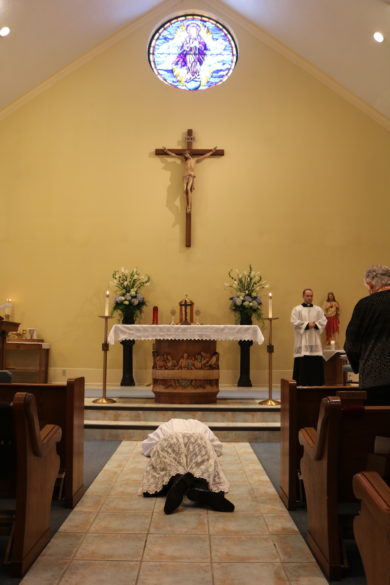
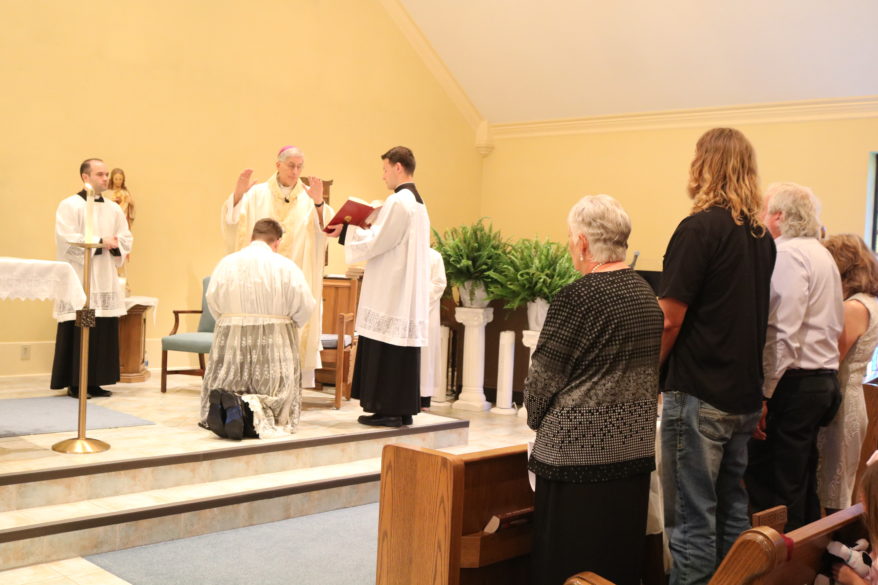
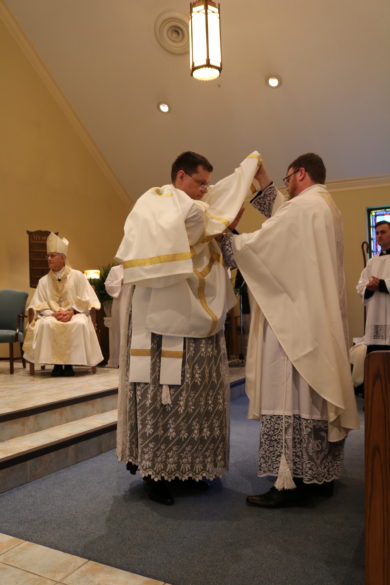
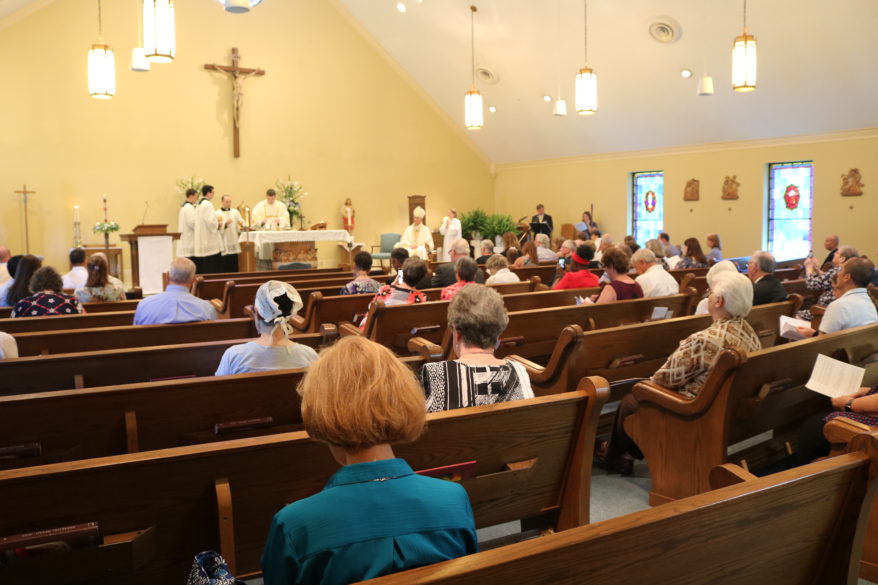

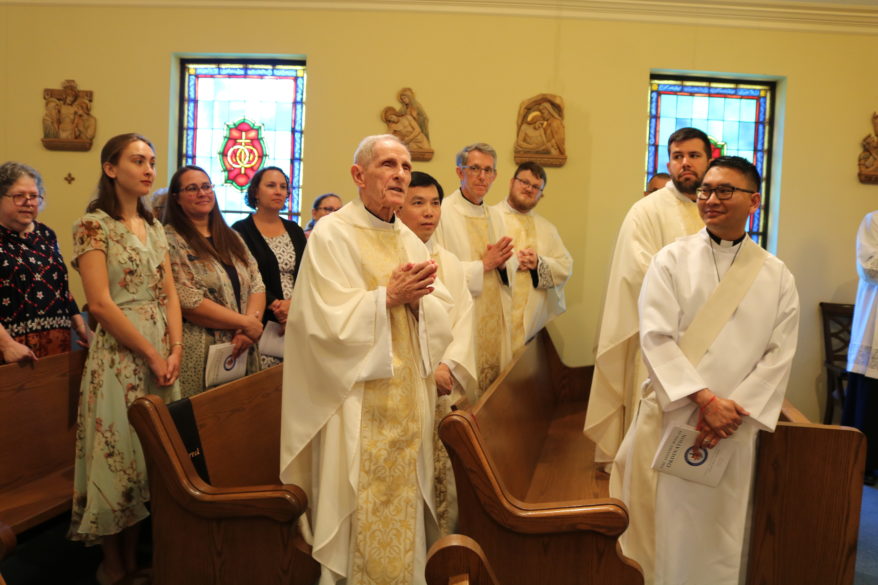
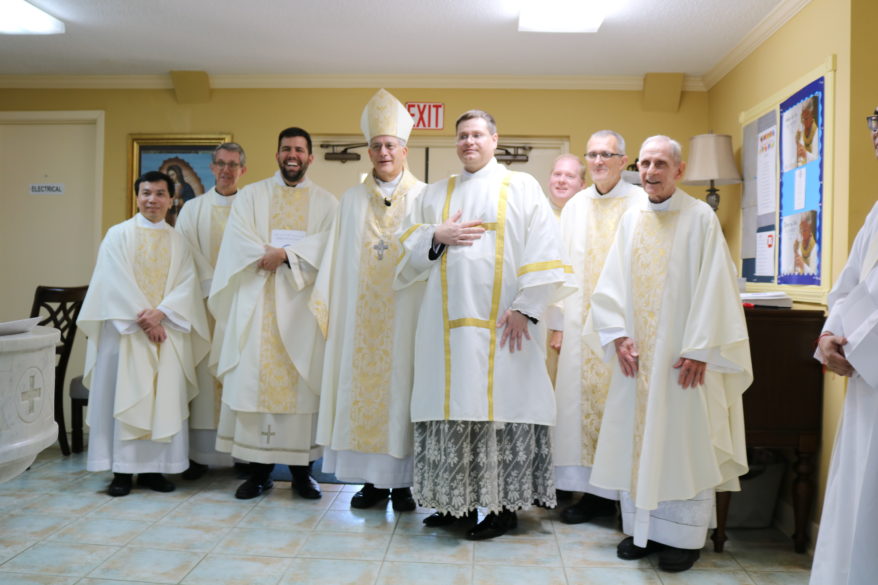
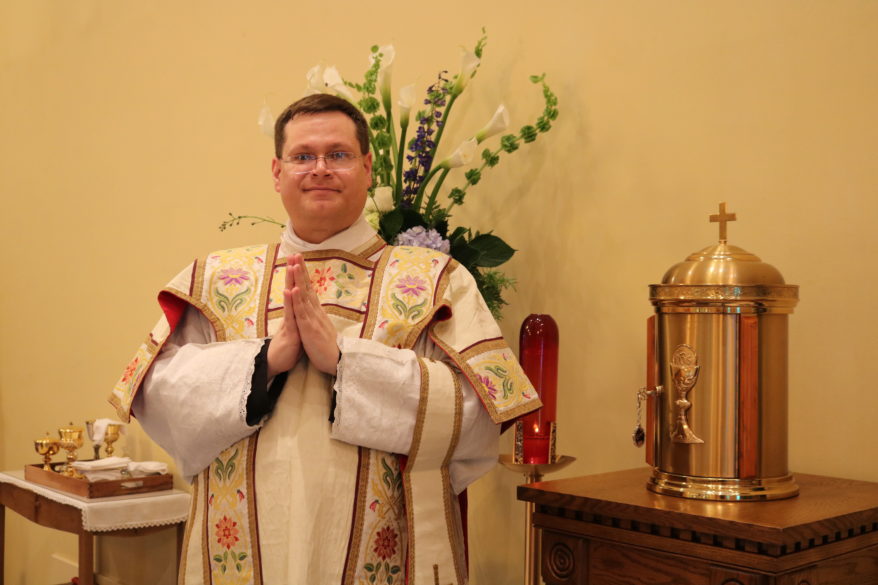
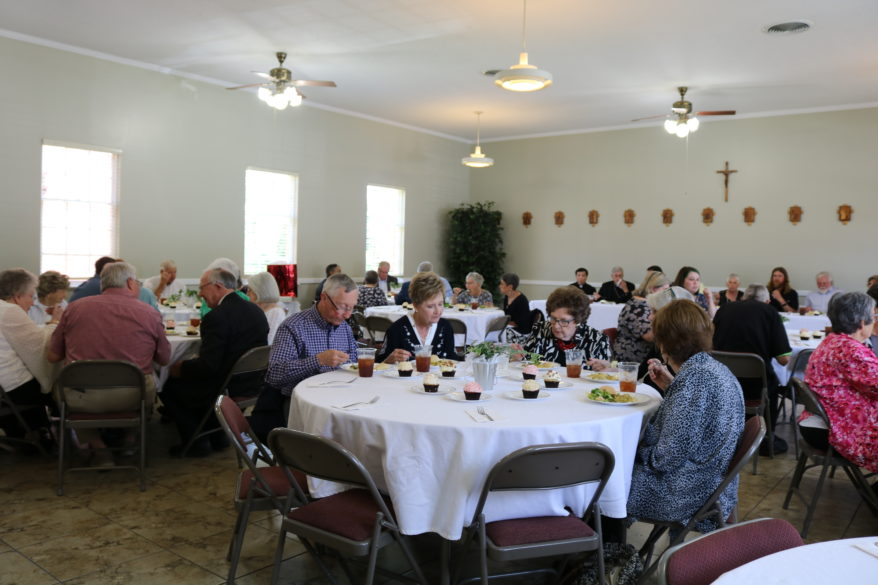
By Joanna Puddister King
A trailer has been released by NewGroup Media and the Diocese of Jackson for the upcoming documentary on Servant of God Sister Thea Bowman.
The trailer has been making the rounds on social media and gives a glimpse into the life of the future Black Catholic saint. The documentary is entitled “Going Home Like a Shooting Star: Thea Bowman’s Journey to Sainthood” and it encompasses her life from her childhood in Canton, her rise to fame as a public speaker and evangelizer, to her death from cancer at age 52 in 1990.
The documentary features testimonies from Sister Thea’s friends, fellow sisters, former students, acquaintances and admirers. It also includes live-action reenactments from moments in her life. The reenactments were filmed in various locations around the country, including locally in Canton featuring local talent, with St. Joseph Catholic School student Madison Ware, as young Bertha Bowman.
Early reactions on social media platforms included:
“These 6 minutes make me wish I had known her so much earlier! Thank you!”
“She deserves this and so do the people!”
“Sister Thea will hopefully one day be the first saint from Mississippi.”
The trailer can be viewed on YouTube at https://bit.ly/SrTheaShootingStar. The film will be released this fall and is due to air on ABC.
